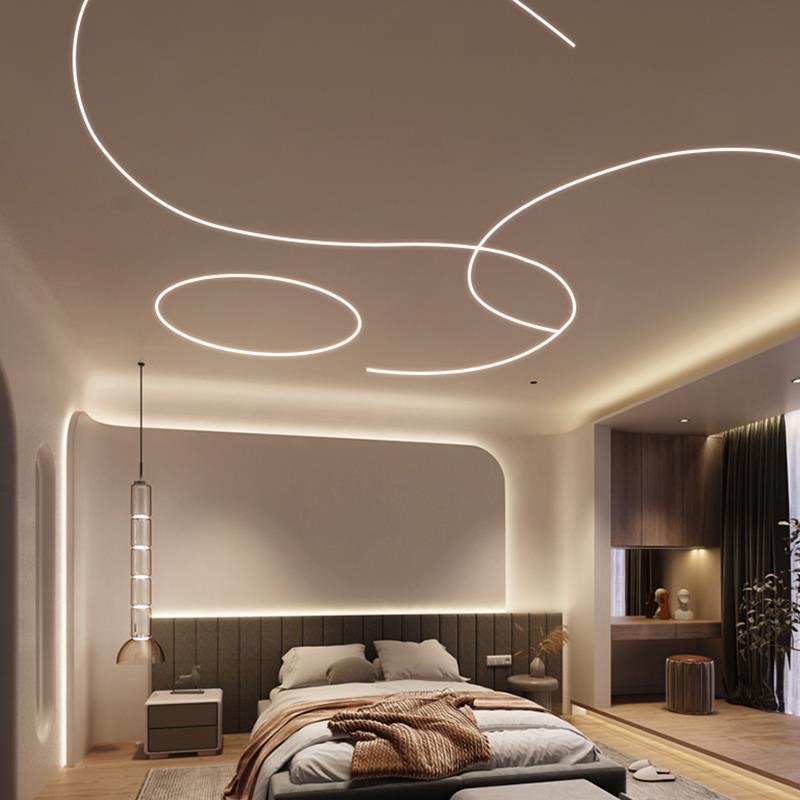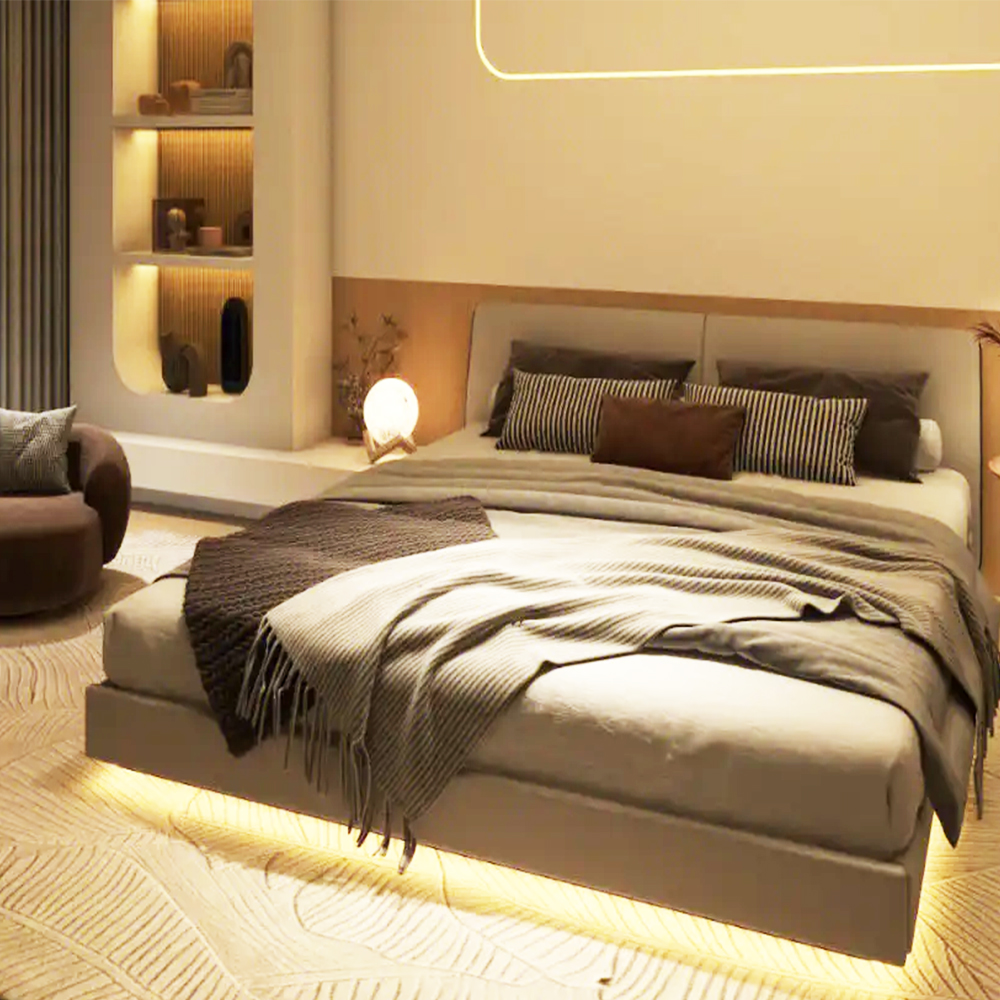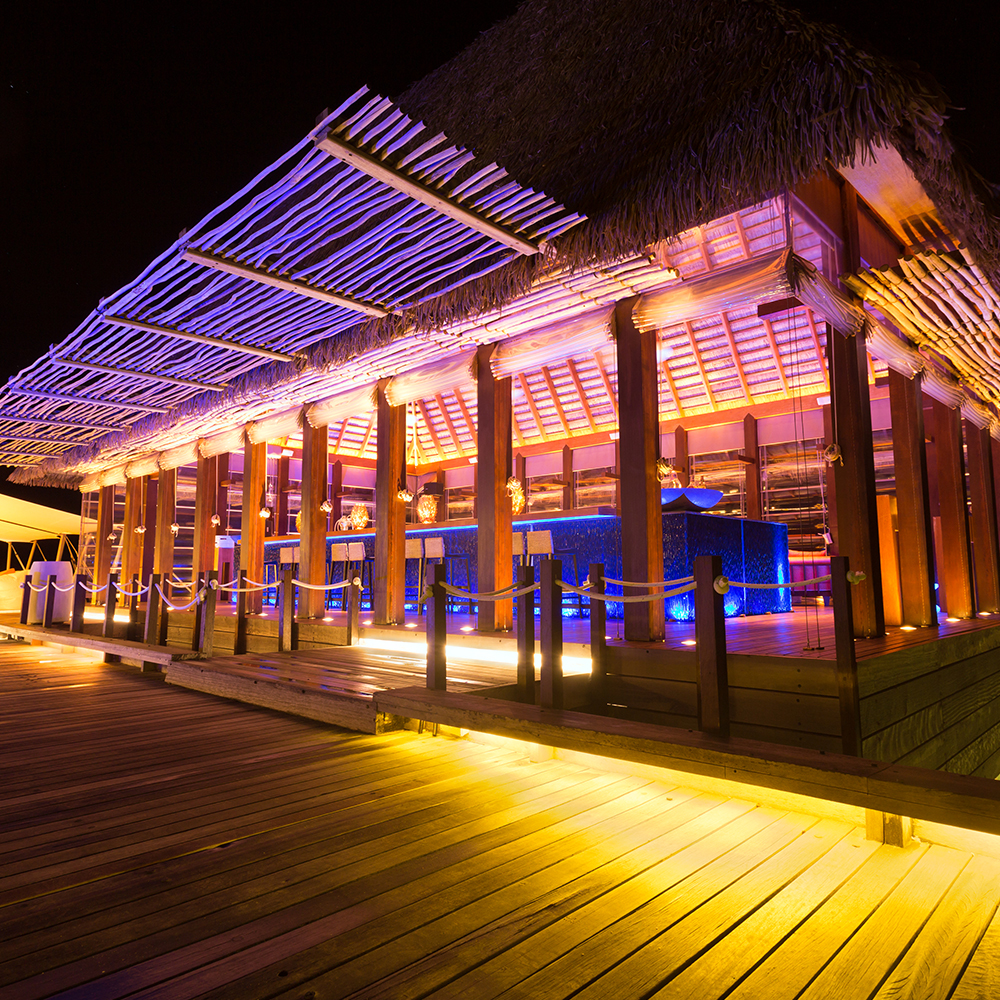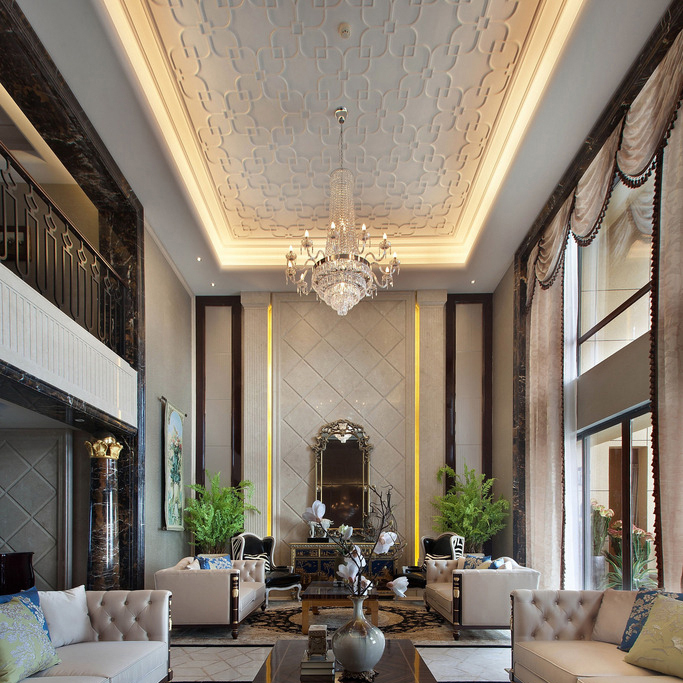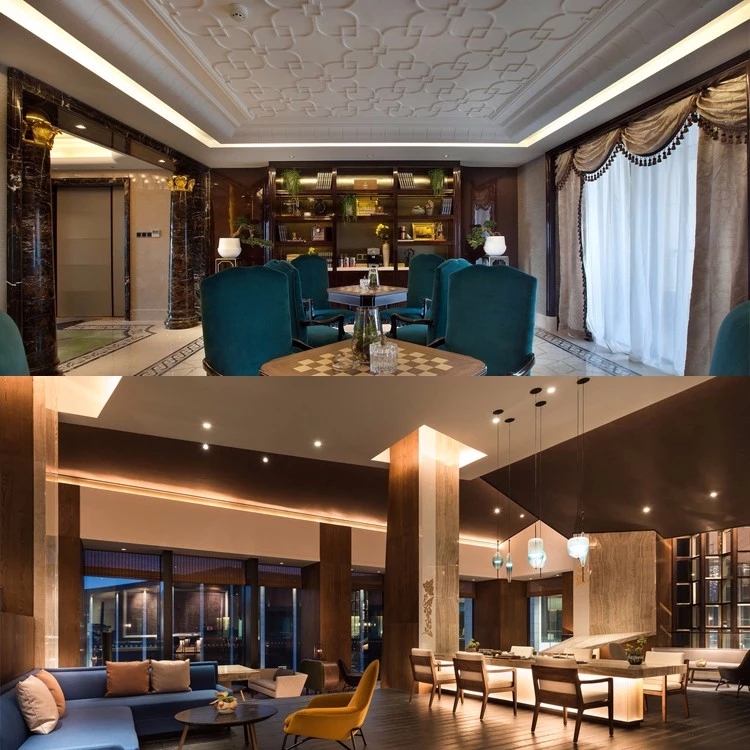Single Color Controllers
Single Color DIM Controllers
- 1/4-Channel Dimming Control:Compatible with all wireless remote controllers, including handheld remotes, panel remotes, and desktop remotes for dimming, color temperature, RGB, RGBW, and RGB + color temperature options. Offers 0-100% dimming, 256 levels of brightness, and 4096 levels of grayscale control.
- 2.4G Wireless Transmission Technology:
- Remote control range up to 30 meters.
- Controllers support cascading functionality, allowing signal forwarding between controllers to extend the control range to several hundred meters.
- Multiple Remote Pairing Options:
- A single controller can pair with up to 10 remotes.
- One controller can be paired across different zones on the same remote for flexible grouping functionality.
- Multi-Zone Control:
- A single remote can control individual or multiple zones.
- Each zone can pair with an unlimited number of controllers.
- Automatic Synchronization:All controllers within the same zone synchronize automatically.
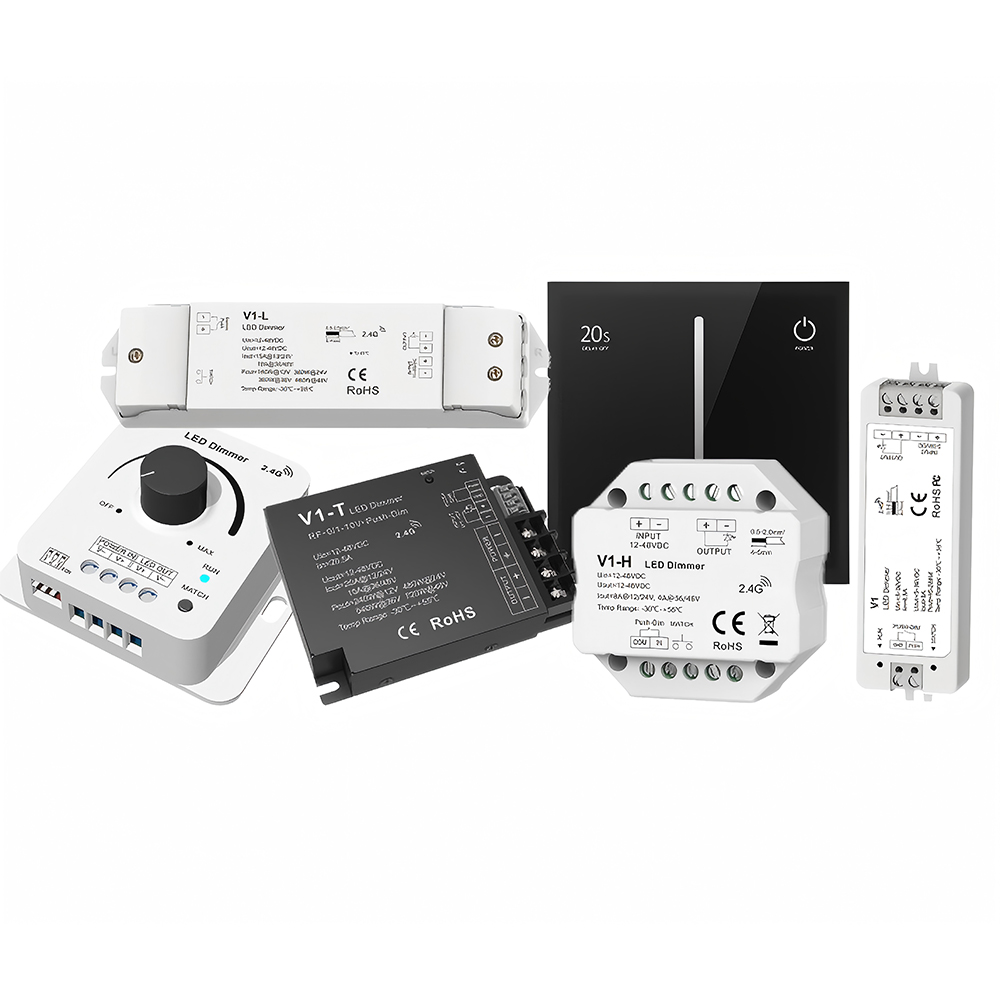
What is Single Color DIM Controllers?
Single Colour DIM Controllers are devices specifically designed for single-color LED strip lights. They enable users to adjust the brightness, color intensity, and lighting modes of single-color LED strips to suit various lighting needs. These controllers improve energy efficiency, extend the lifespan of LED fixtures, and provide flexible lighting solutions for diverse environments.
RF DIM Control System
We offer a variety of dimming controllers, LED dimming switches, and LED remote controls. Products include wall switches, wired dimmers, wireless and multi-zone remotes, and more. These products enable intelligent control functions such as light switch control, brightness adjustment, grouping and zoning, scene setting, timing, and motion sensing, depending on the combination of products.
Wireless dimming controllers, known for their wire-free installation, ease of setup, low cost, reliable performance, and diverse combinations, are widely used in various lighting projects.
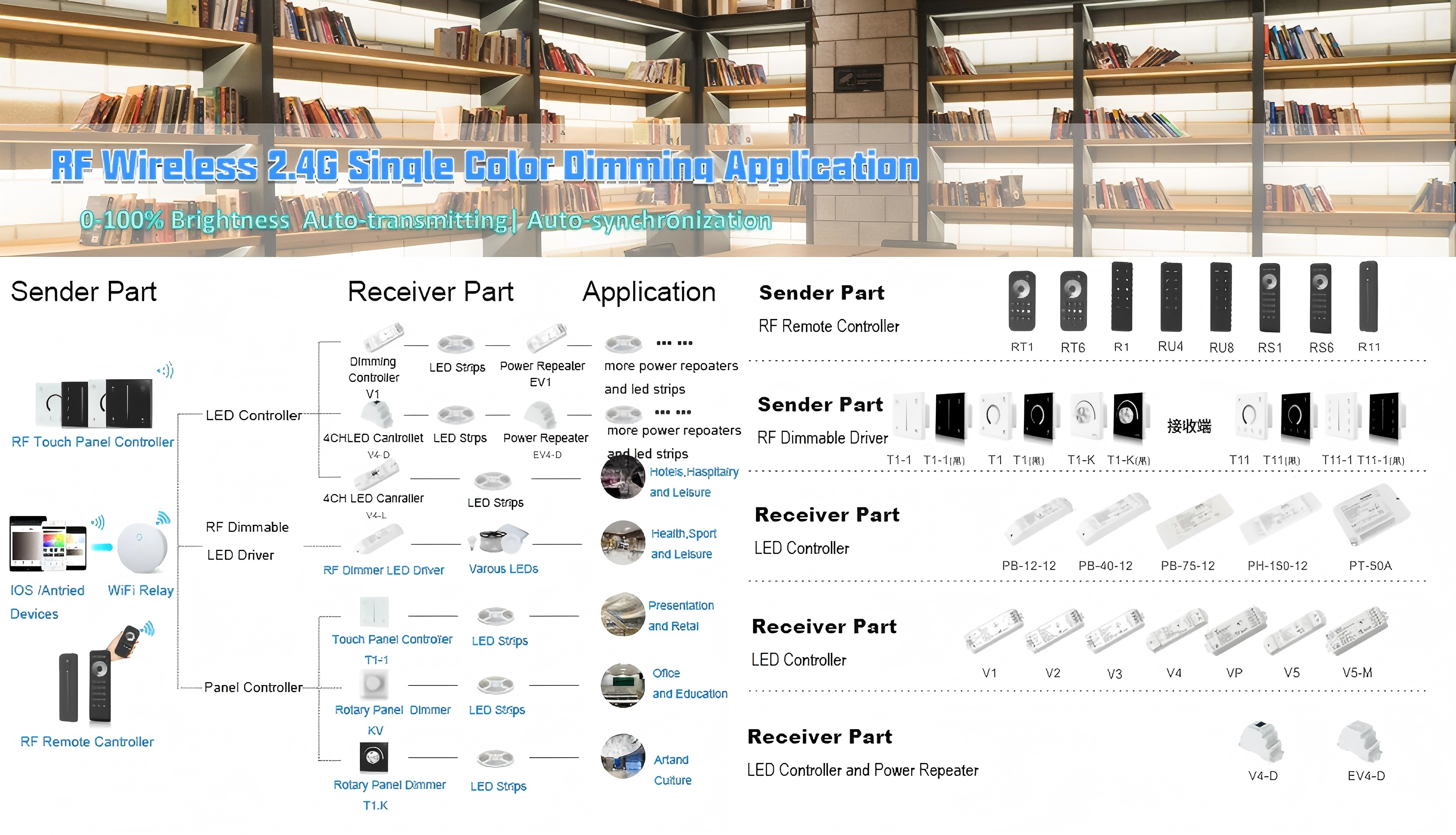
DIM - LED Controller
-
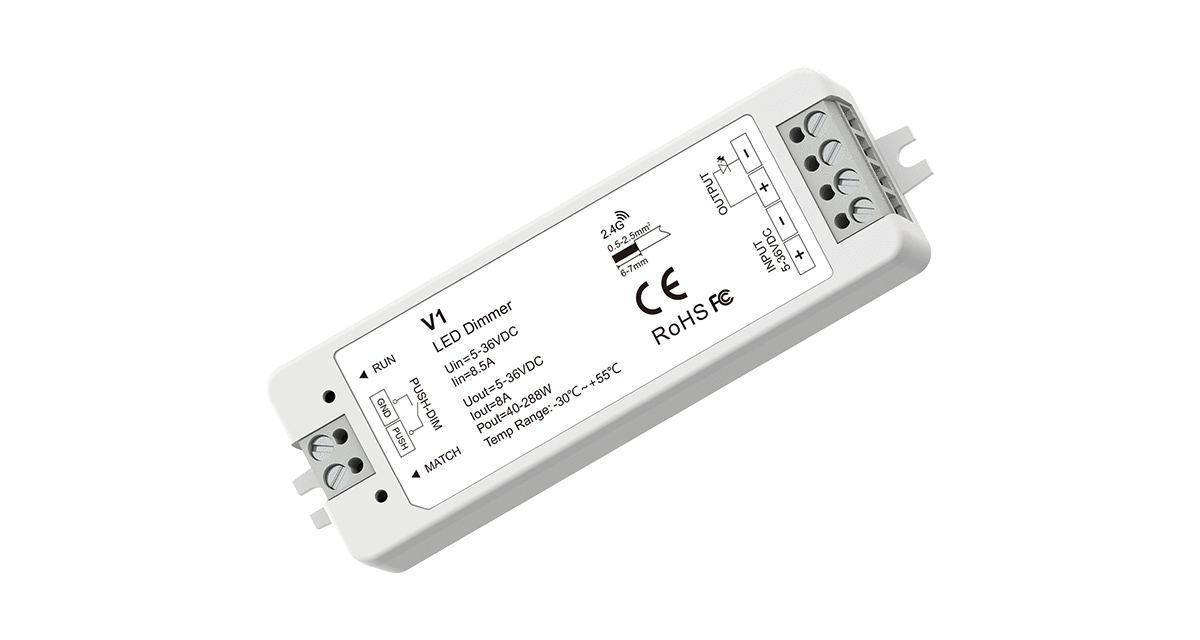
V1
-
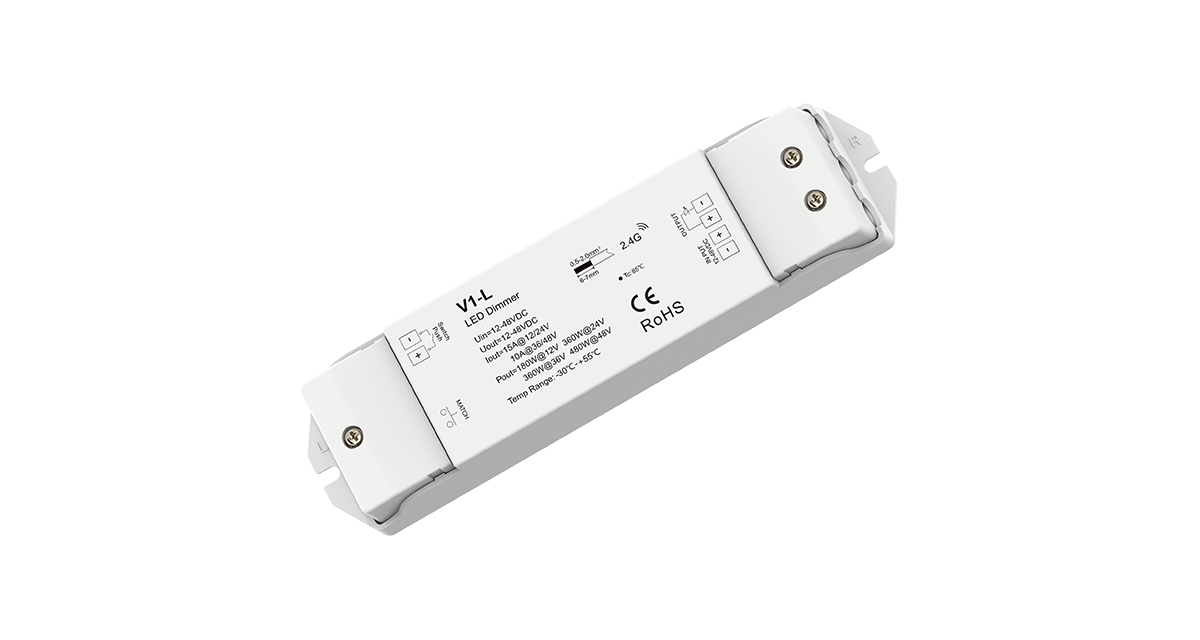
V1-L
-
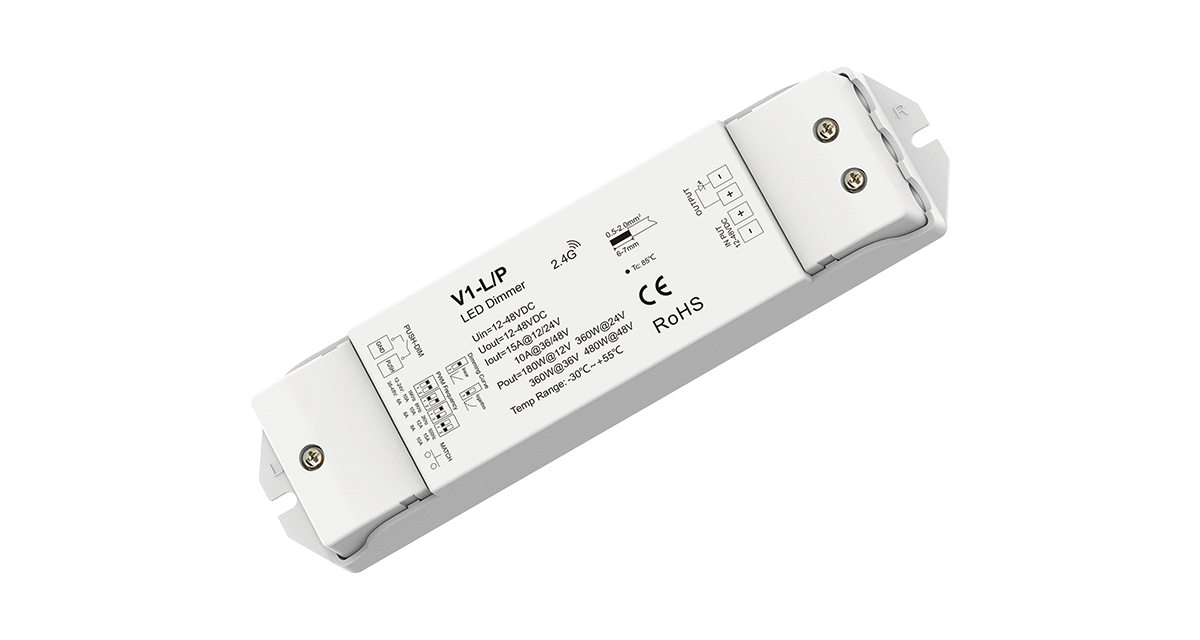
V1-L/P
-
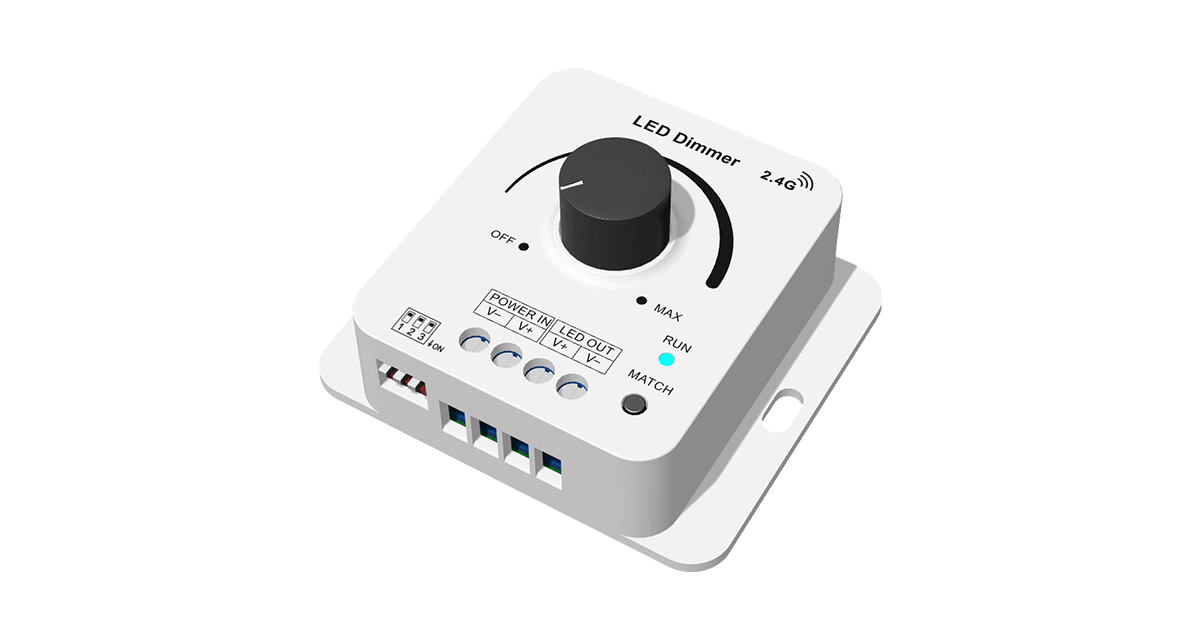
V1-KS
-

V1-H
-
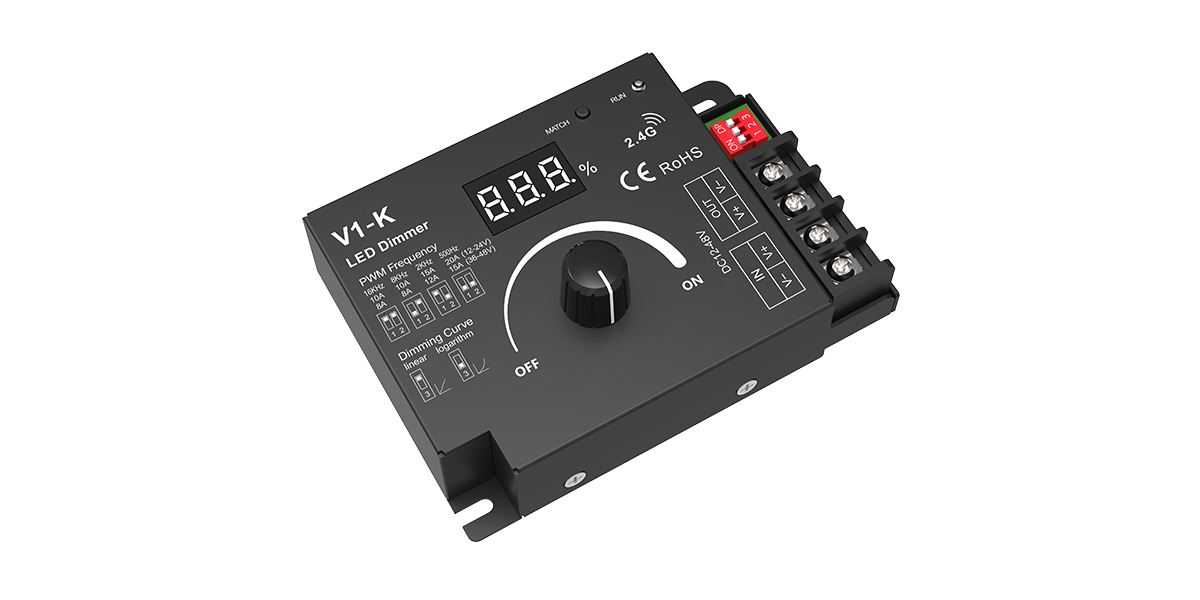
V1-K
DIM - Panel Controller
-
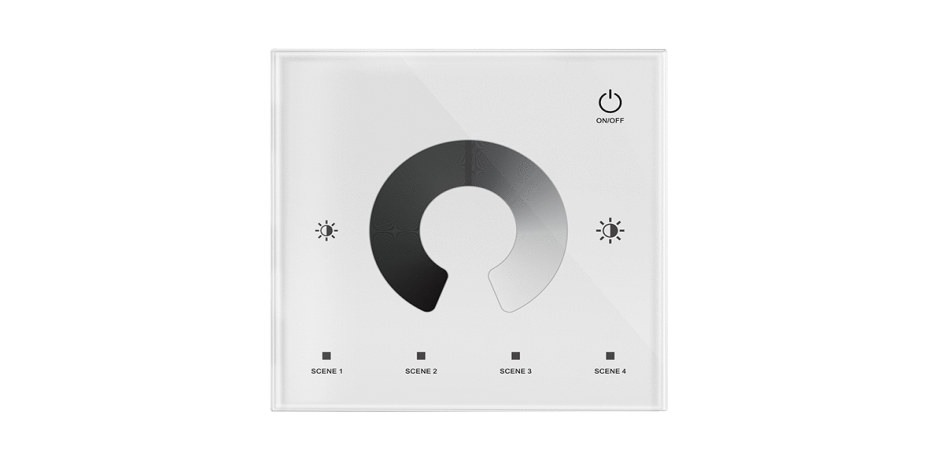
T1
-
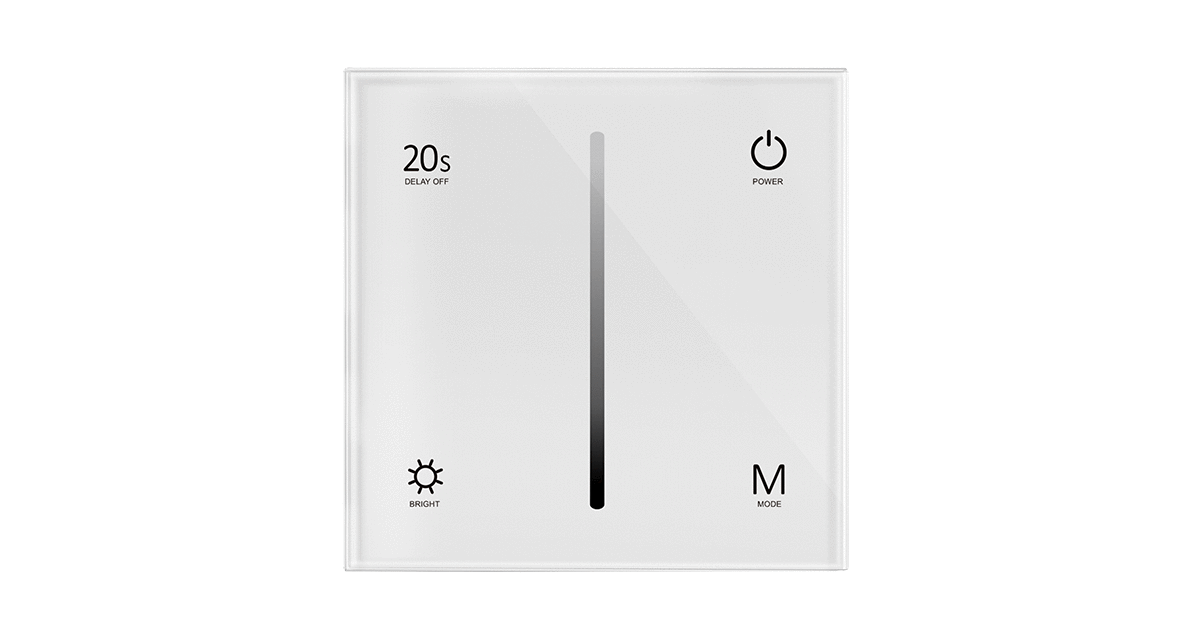
T1-1
-
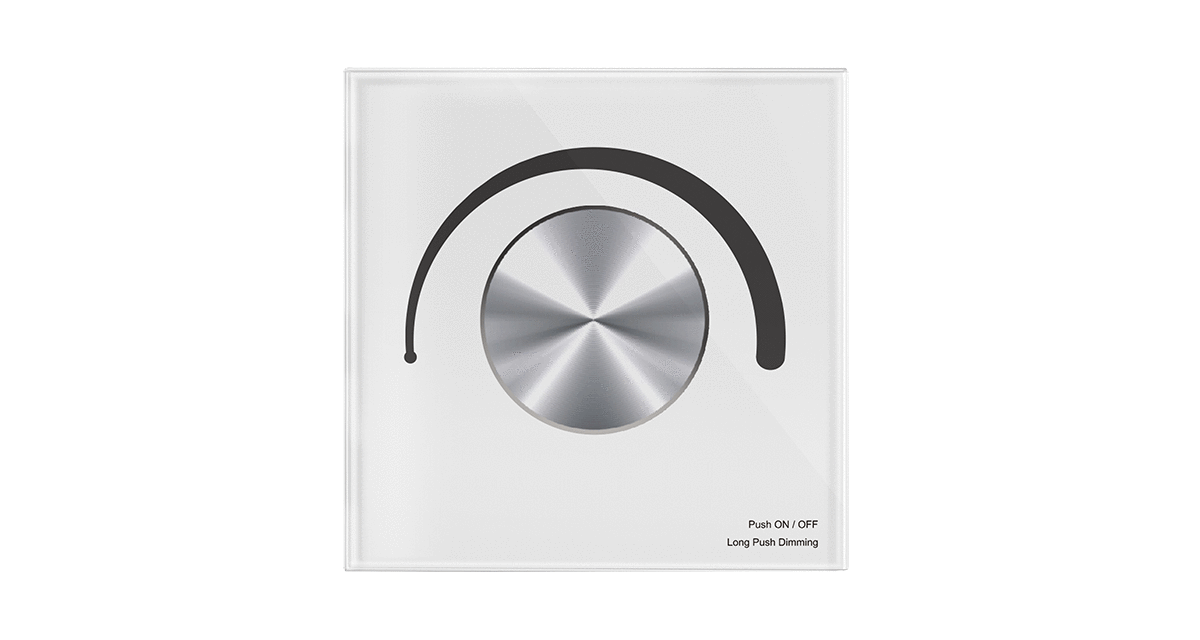
T1-K
-
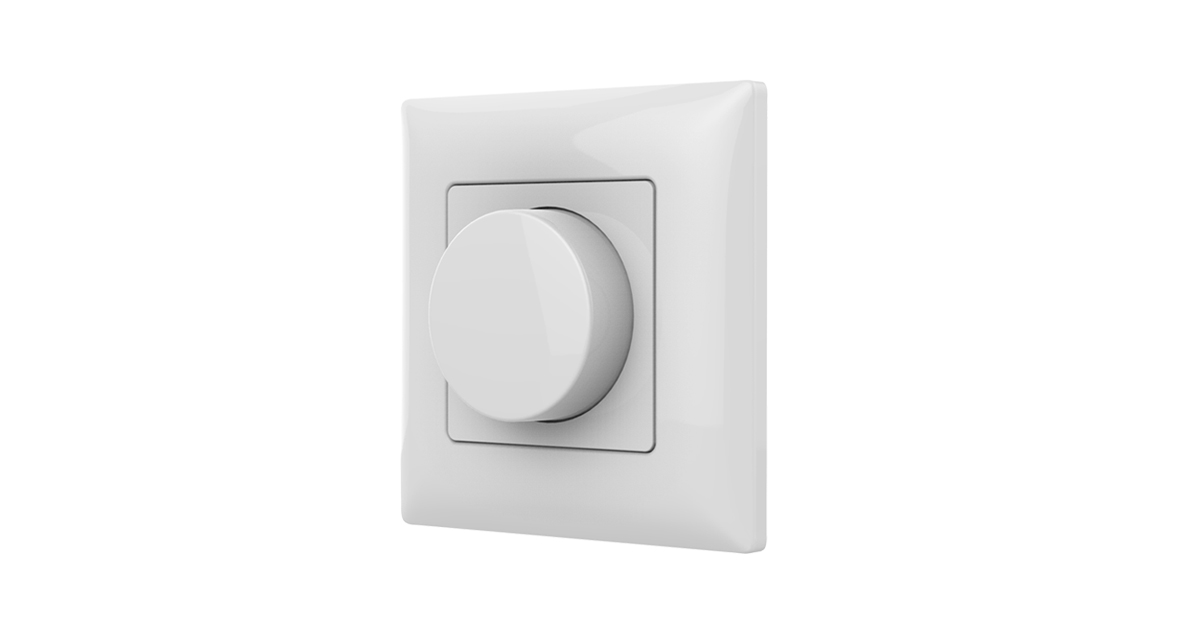
PK1
-
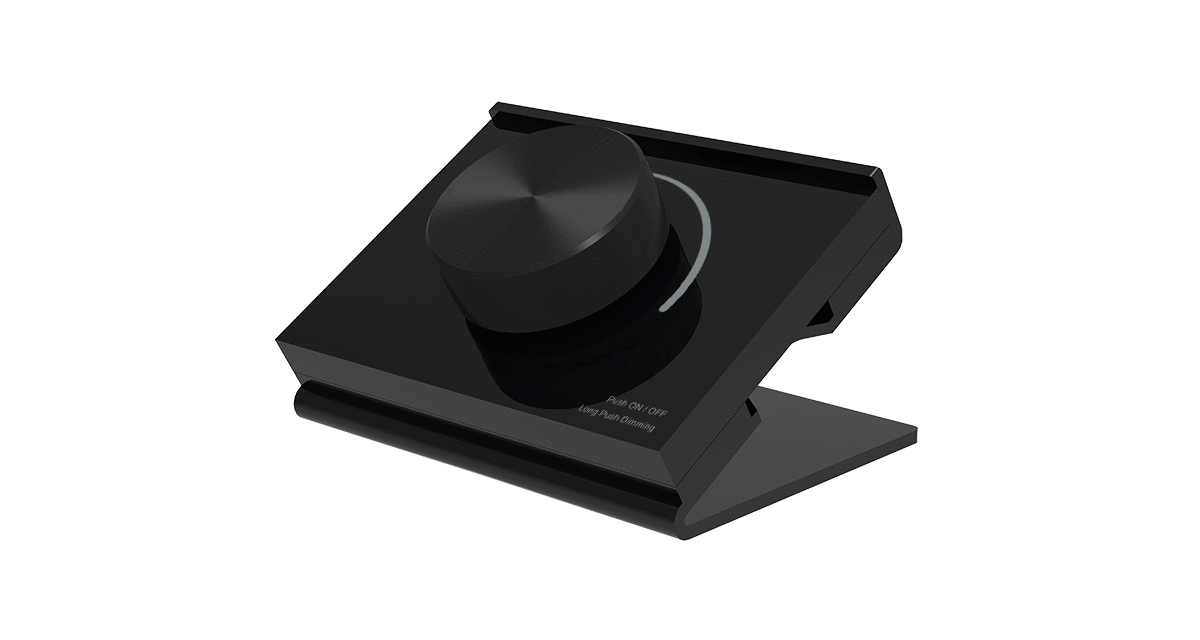
RK1
-
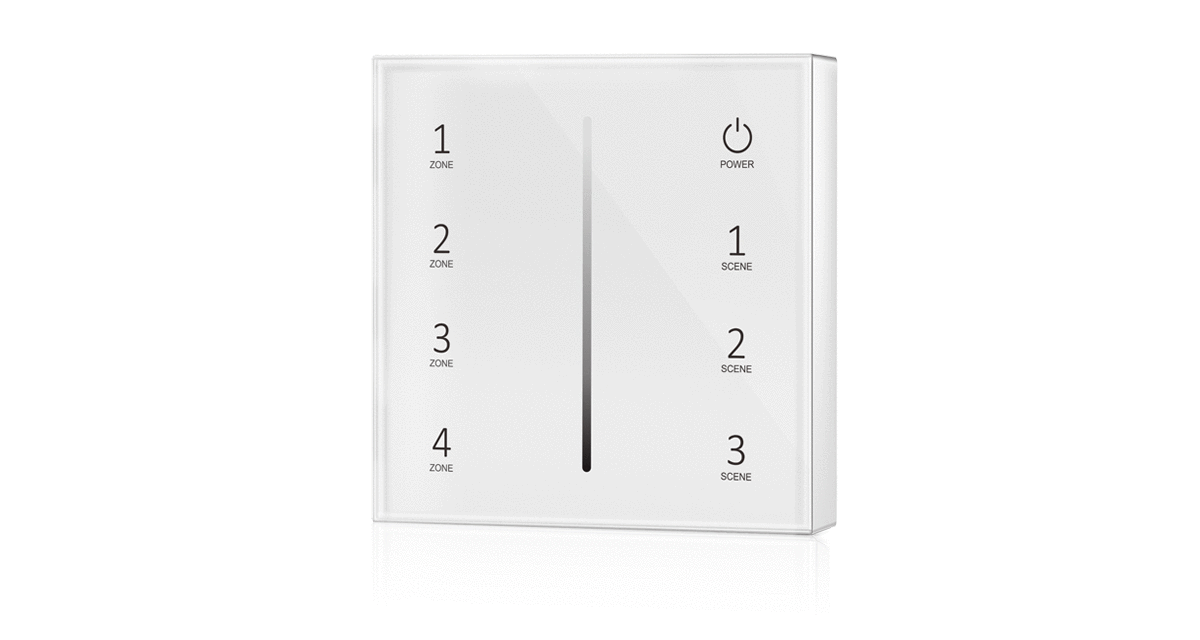
T21
DIM - RF LED Remote Control
-
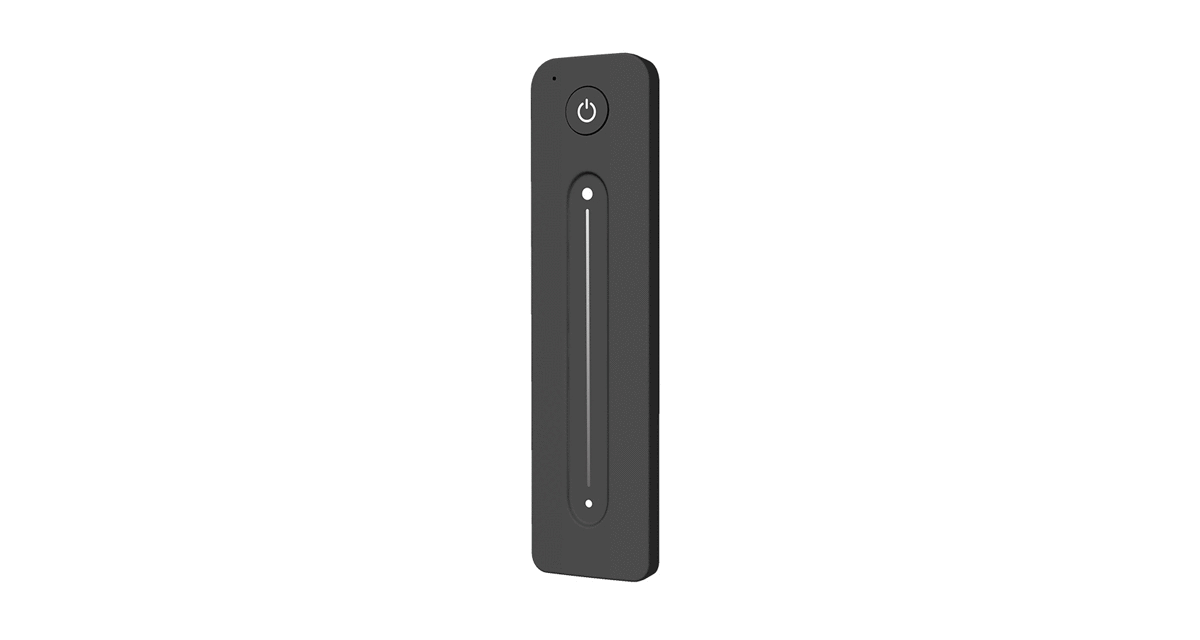
R11
-
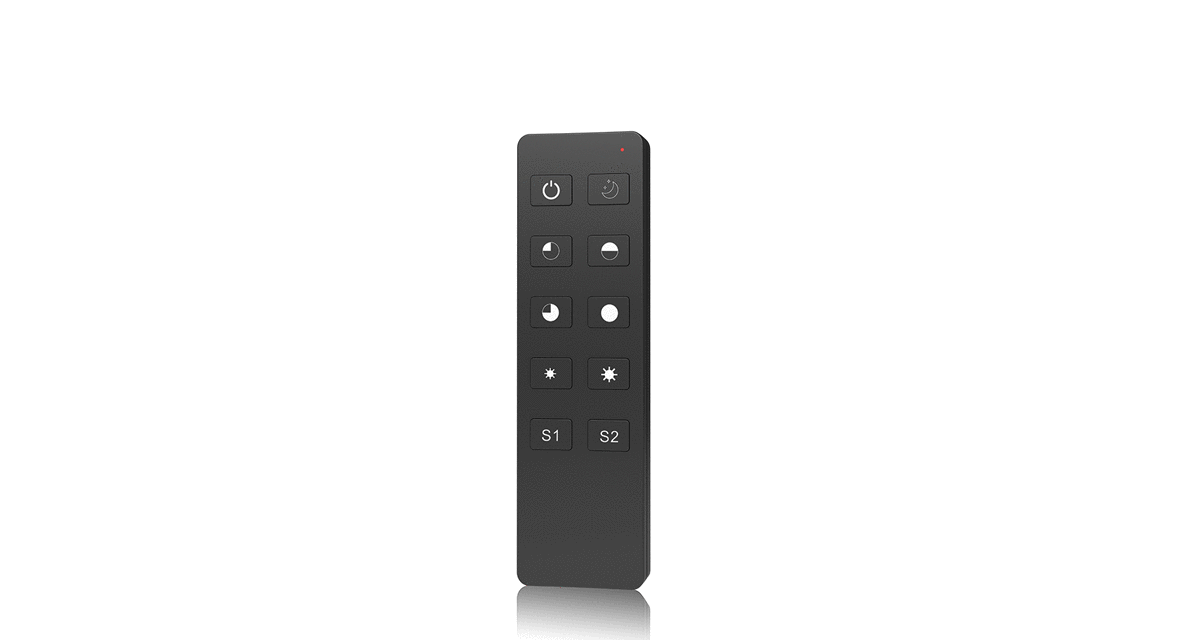
R1
-
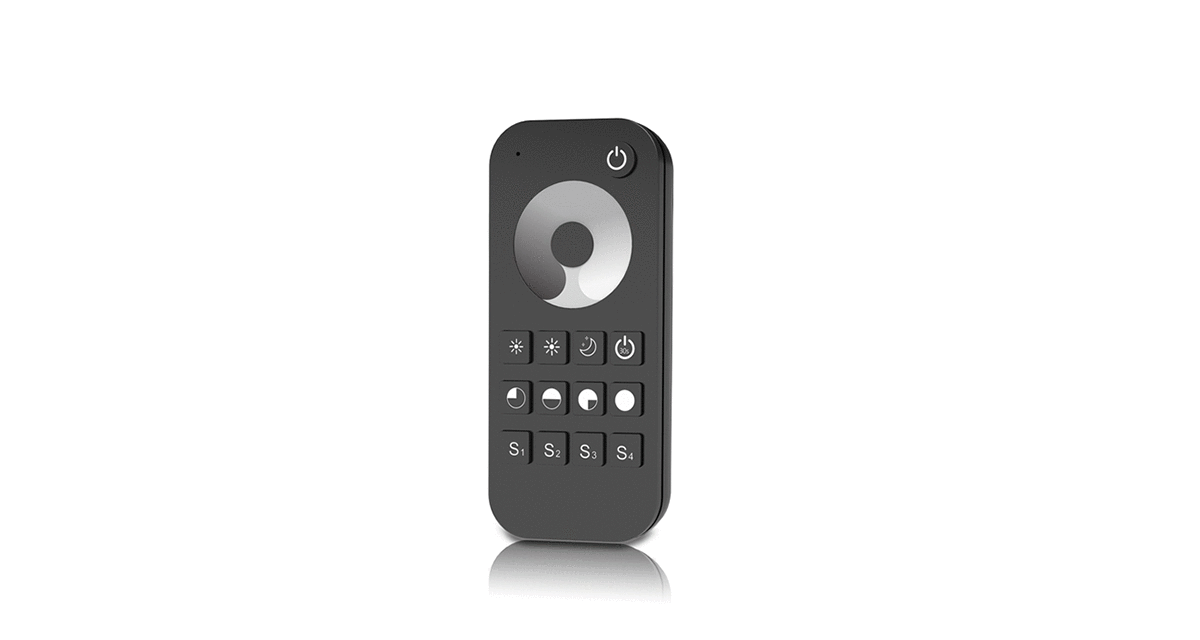
RT1
-
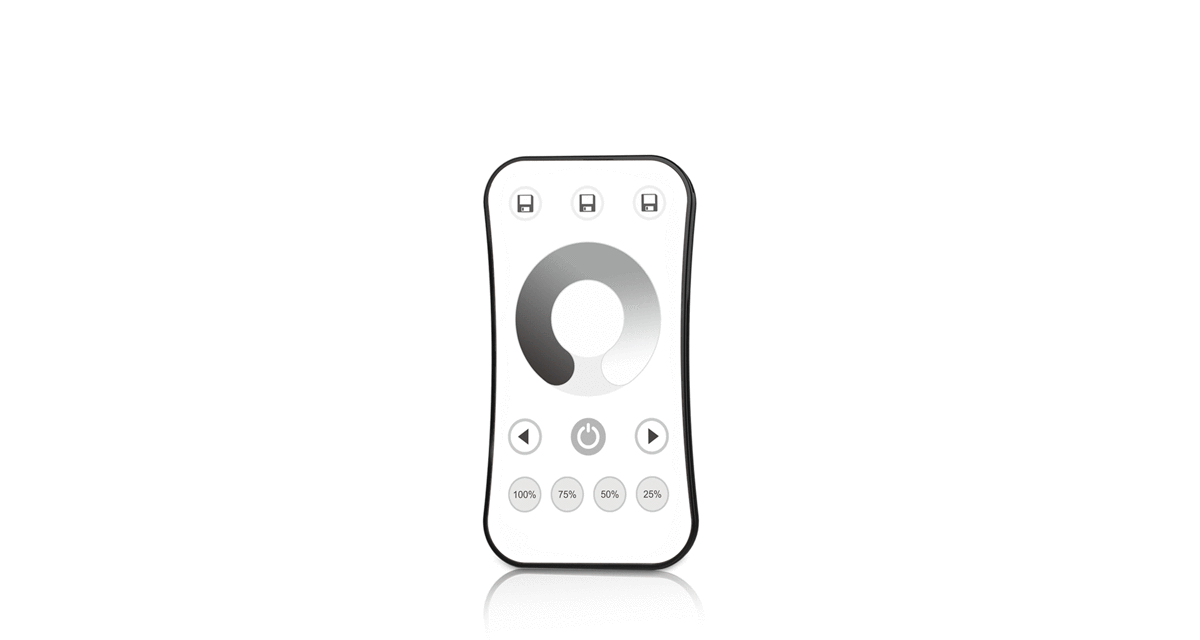
R1-6
-
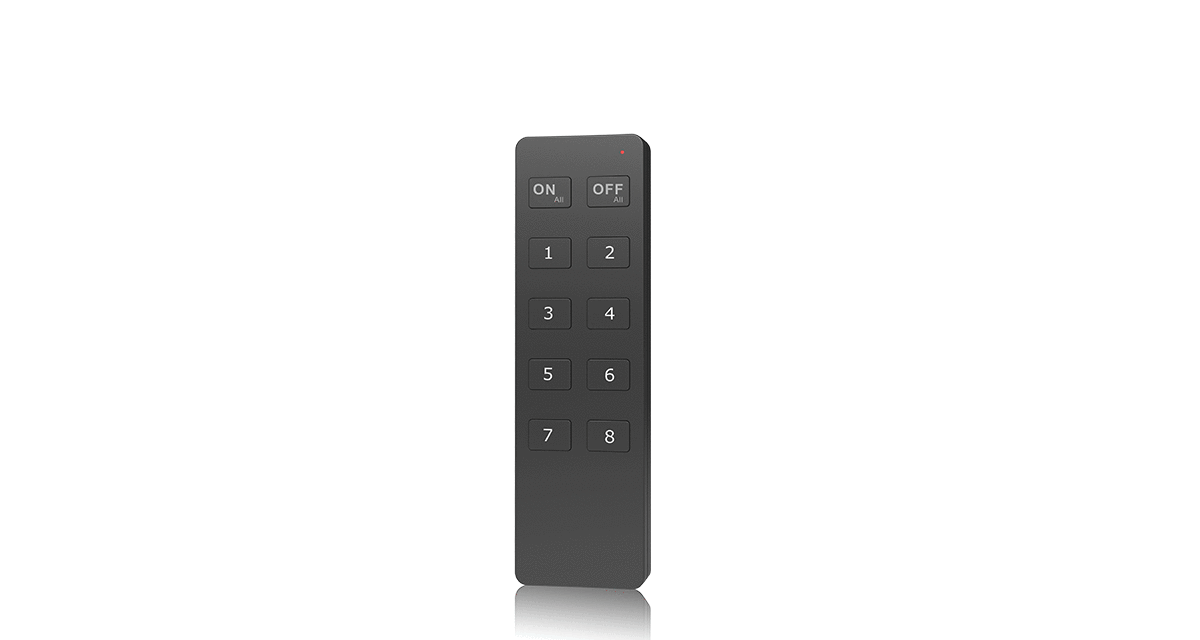
RU8
-
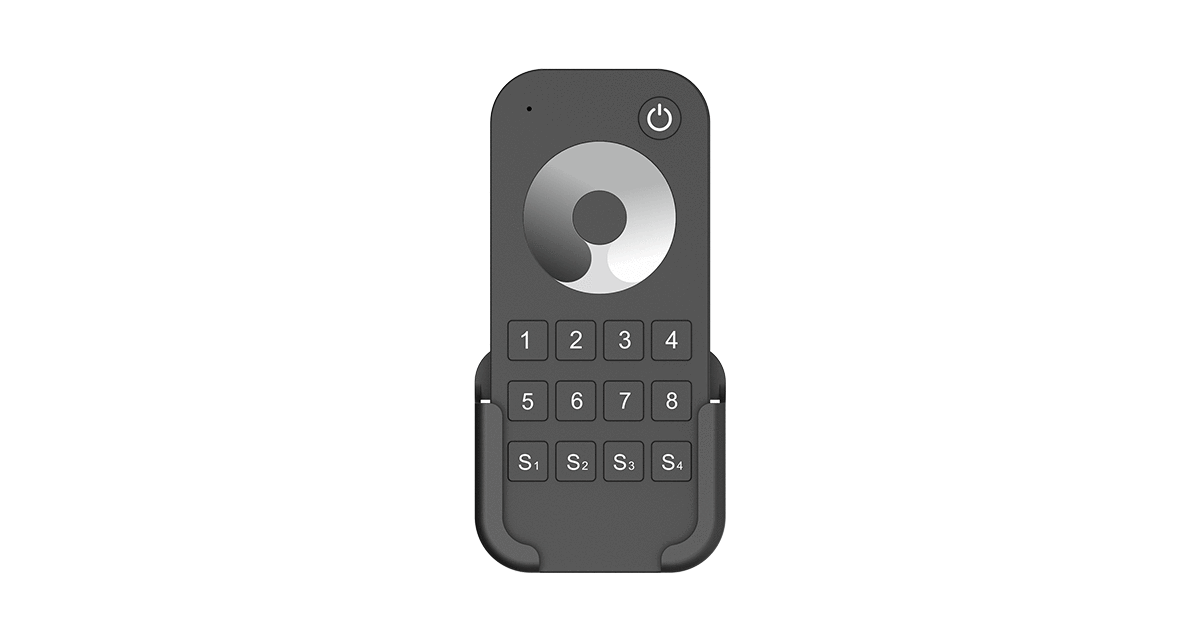
RT8
Videos of Single Color Controllers
FAQs
Here is the top frequent asked questions. If you are still not very clear, feel free to content our consultant for more details.
We offer FREE SAMPLES for your business.
-
What is the difference between RGB and white LED strips?
The main differences between RGB and white LED strips are in color representation, control methods, and application scenarios.
- Color Representation
- RGB LED strips use red (R), green (G), and blue (B) LEDs to mix and produce a wide range of colors. You can control these colors using a controller or app to create the desired color effects.
- White LED strips use a combination of RGB LEDs and an additional white (W) LED, often a warm white, to create more diverse color options, including pure white light.
- Control Method
- RGB LED strips can typically be controlled via a remote or mobile app, allowing you to change colors, adjust brightness, and select different modes.
- White LED strips offer more advanced control options, including music synchronization, interactive modes, and even voice control.
- Application Scenarios
-
- RGB LED strips are ideal for creating dynamic and special effects in places like bars, nightclubs, theaters, and stage performances, adding vibrant color to your environment.
- White LED strips are used in residential spaces, kitchens, living rooms, or offices for ambient or task lighting. They allow for more subtle lighting adjustments and are commonly used in decorative lighting, under-cabinet lighting, and accent lighting.
- Color Representation
-
What is the difference between analog and digital LED strips?
The main difference between analog and digital LED strips is in their control methods, dimming effects, lifespan, and cost.
- Control Method
- Analog LED strips use analog signals to control brightness by adjusting the current, which can vary continuously but with limited control and susceptible to interference.
- Digital LED strips use digital signals (PWM dimming), allowing precise brightness control via pulse-width modulation, providing more stable performance and less interference.
- Dimming Effect
- Analog dimming offers continuous dimming but may shorten the LED lifespan due to operating outside rated current, with lower efficiency.
- Digital dimming uses PWM technology to offer flicker-free dimming at frequencies above 120Hz, providing smoother and more consistent brightness adjustments.
- Lifespan
- Analog dimming can shorten the LED lifespan due to inefficiency and non-rated current operation.
- Digital dimming reduces LED wear by ensuring operation within rated current, extending the lifespan.
-
Is COB LED better than LED?
COB and traditional LED technologies each have their advantages and disadvantages depending on the application.
COB (Chip On Board) LED places multiple small chips close together on a single board, producing a smooth, uniform light with virtually no visible dots. This makes COB LED ideal for applications requiring soft, even lighting, such as commercial lighting.
On the other hand, SMD (Surface Mount Device) LED chips are typically spaced apart, which can result in a spotty light effect if no diffusion material is used. SMD is more suitable for applications where distinct light points are needed and can be customized to create brighter strips, with more flexibility in customer specifications.
-
What are the disadvantages of COB LED strips?
- Color Consistency Issues: COB LED strips may suffer from color unevenness, particularly in environments requiring high consistency. The color variation can be more apparent, especially with a 5-step MacAdam ellipse.
- Lower Power Consumption: While lower power consumption is good for energy-saving, it can result in insufficient brightness in scenarios with high brightness requirements.
- Lower Light Efficiency: COB LEDs generally have lower light efficiency than SMD LEDs, meaning they may offer lower brightness at the same power.
- Higher Defect Rates in Waterproofing: The flip-chip structure used in COB LEDs is more complex, leading to a higher defect rate in waterproofing processes compared to SMD LEDs. This can make COB LED strips more prone to defects during the manufacturing process.
Aluminum Profile
LED Aluminum Profile
- Length Options: Available in 1m, 2m, and 3m lengths.
- Cover Colors: Choose from black, opal (milky), frosted, or clear covers.
- High Clarity and Light Transmission: Ensures high visibility and excellent light diffusion with superior heat dissipation.
- Material Quality: Made of durable 6063-T5 aluminum alloy, available in silver, white, or black finishes.
- Surface Protection: Anodized and coated to prevent corrosion, rust, and discoloration, ensuring long-lasting durability.
- Customization Options: Fully customizable in terms of dimensions, cover colors, aluminum finishes, and lengths. Additional services include mold opening to meet specific size requirements.
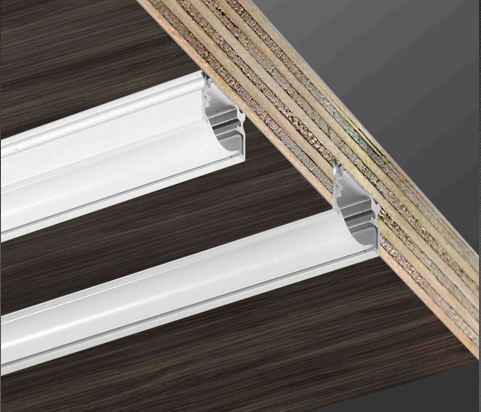
What is LED Aluminum Profile?
LED aluminum profiles, also known as LED diffuser channels or LED aluminum extrusions, are essential accessories for LED strip lights. They comprise an aluminum base, cover, clips, end caps, and screws. Their primary purpose is to protect LED strips while enhancing their appearance. Profiles diffuse the light, creating a softer, more uniform glow that adds warmth and a modern touch to spaces. Additionally, the aluminum material offers excellent heat dissipation, extending the lifespan of LED strips and preventing overheating.

Different Types of LED Aluminum Profiles
Shenzhen LEDWorker Lighting Co., Ltd. is located in Shenzhen, established in 2012, and is a supplier of LED aluminum profiles. We have modern technology and high-quality manufacturing/R&D capabilities. We offer a full range of LED aluminum profile products, providing various LED profiles, PC/PMMA covers, end caps, fasteners, and other accessories to customers in over 200 countries worldwide. The delivery time for our LED aluminum profiles is 3-5 days, and the OEM delivery time is 10-15 working days.
Our products meet the needs of different industries, and here is our product Series.
Products Index:
- Surface Mounted Series
- Corner Mounted Series
- Recessed Mounted Series
- Regular Suspension Series
- In Ground Series
- Stair Series
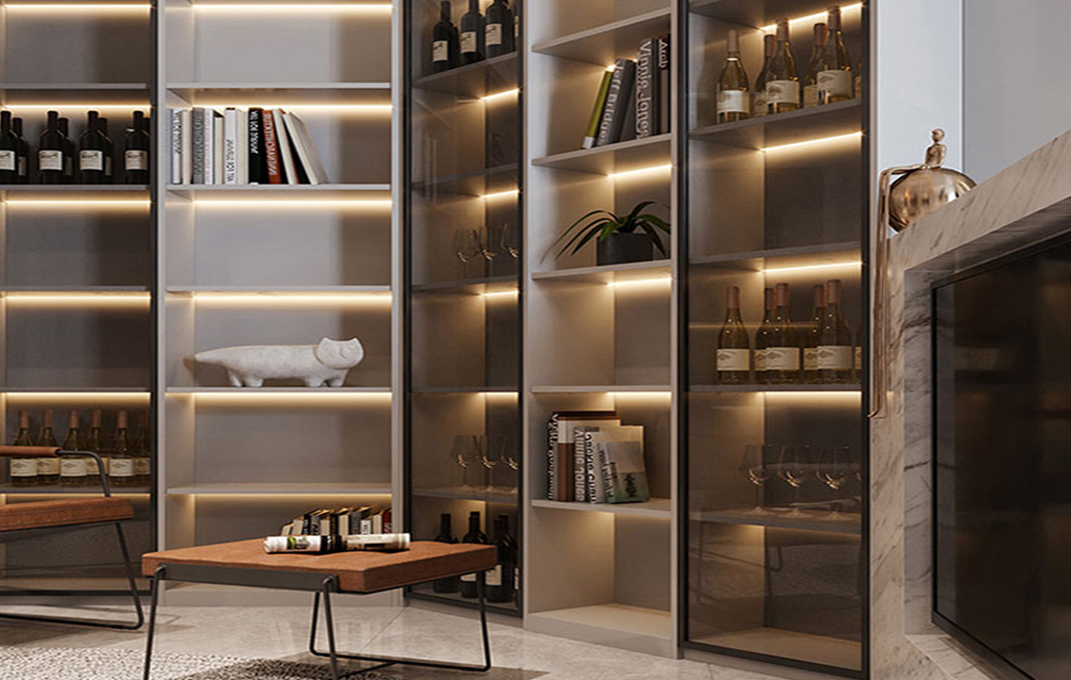
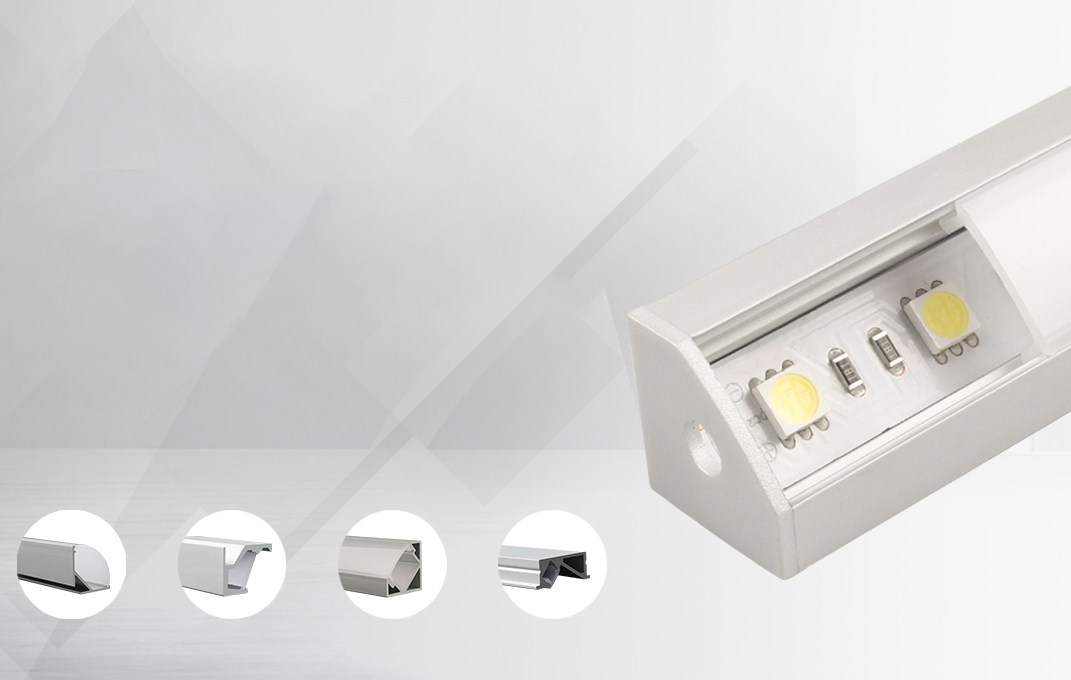

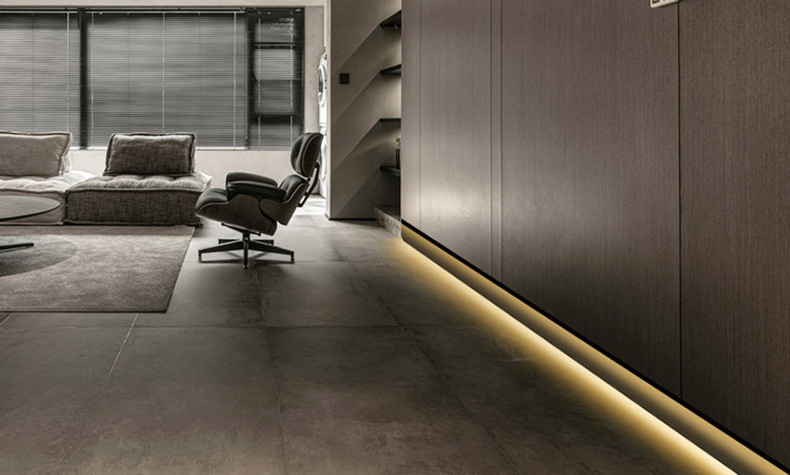
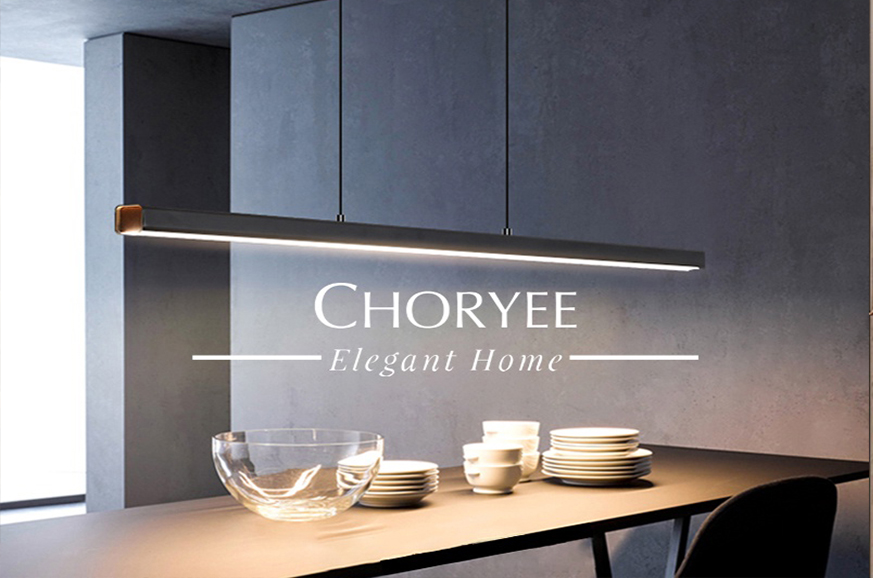
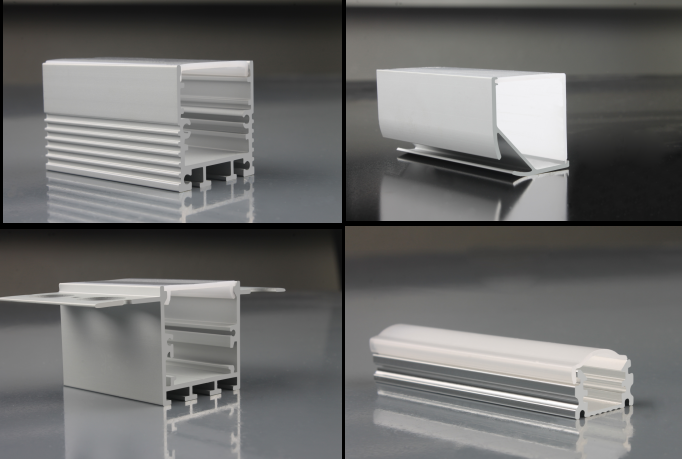
1. Surface Mounted Series
Designed for ease of integration into desktops, walls, and other surfaces, this mini aluminum profile series offers narrow dimensions and compatibility with different PC covers, such as transparent, semi-transparent, or frosted finishes. Some profiles include tiltable brackets for customizable lighting angles.
Applications:Cabinet lighting,Countertops and sink lighting,Shelf, drawer, and under-cabinet lighting,Retail, commercial buildings, and residential spaces
2. Corner Mounted Series
These compact, asymmetrical profiles feature a 120° beam angle, ideal for focused illumination in corners or at angles. Perfect for applications such as:
Cabinet lighting,Bookshelves,Stairs
Available with transparent, frosted, or opal covers for desired lighting effects.
3. Recessed Mounted Series
This series integrates profiles seamlessly into walls or furniture for a hidden lighting effect, where the light appears to emanate naturally from the structure.
Features:Sleek, modern aesthetics,Enhanced spatial ambiance,Multiple width, depth, and color options
Applications:Modern homes,Office environments
4. Stair Series
Specially designed for stair lighting, these profiles embed LED strips beneath stair treads to align with their linear design.
Benefits:Increased safety by illuminating steps,Enhanced ambiance in indoor spaces,Ideal for creating a warm, welcoming atmosphere
5. Regular Suspension Series
Used primarily in commercial or office settings for ceiling-hung designs, these profiles are stylish and practical.
Features:Fashionable, modern aesthetics,Effective glare reduction,Broad illumination coverage
Customization Options:
- Lengths: 1m, 2m, 3m, or custom
- Covers: Black, milky, frosted, or transparent
- Materials: Anodized aluminum (silver, black, white)
- Custom Molding: Specific dimensions, colors, or lengths available
Why Choose LED Aluminum Profiles?
Using LED aluminum profiles with LED strips can diffuse the light, making it softer and more uniform, creating a warm and comfortable atmosphere in the space. The high-quality aluminum alloy material provides excellent heat dissipation, preventing the LED strips from overheating and extending their lifespan. It also prevents direct glare and is resistant to yellowing and cracking over time. Our LED aluminum profiles come in over 200 different specifications, offering a variety of styles.
Advantages of LEDWorker Lighting Aluminum Profiles
-
1.Extensive Product Range
LEDWorker provides over 200 profile options in various dimensions, cover types, and end caps. Whether for cabinets, furniture, interior décor, shopping malls, in-ground, or staircase lighting, we offer diverse solutions to meet your project needs.
-
2Linear Effect for Enhanced Ambiance
- Aluminum profiles conceal LED strips, eliminating direct exposure and creating a seamless linear lighting effect.
- Warm light hidden within profiles produces a "light without seeing the fixture" look, ensuring smooth, uniform illumination that enhances the aesthetic appeal and creates a cozy atmosphere.
-
3.Protection for LED Strips
- Aluminum profiles provide sturdy protection against physical damage during installation and usage.
- Paired with PC covers, they shield LED strips from dust, water, and UV rays, reducing wear and ensuring longevity.
-
4.OEM & ODM Services
- Profiles can be customized in length, dimensions, cover types, and colors.
- Factory pre-installed and tested, eliminating the need for customer soldering. We also offer custom molds for unique designs.
-
5.Material Excellence
- Thickened aluminum frames ensure durability, scratch resistance, and deformation-free cutting.
- High-transmittance milky diffusion panels reduce glare while maintaining excellent light output.
- Treated with an anti-oxidation coating, profiles resist aging, corrosion, and discoloration.
How to Choose the Right Aluminum Profile
1.Determine the Shape
- Surface-Mounted Profiles: Ideal for flat surfaces like desks or walls.
- Corner Profiles: Feature a 45° angle for use in corners or shelves.
- Recessed Profiles: Embed into walls or furniture for a clean, seamless look.
- Stair Profiles: For step lighting to ensure safety and ambiance.
- In-Ground Profiles: For outdoor use, such as pathways or gardens.
2.Select the Dimensions
- Length: Common lengths include 1m, 2m, 3m, or custom sizes. For shipping convenience and cost, consider splitting longer profiles into smaller sections.
- Width: Ensure the profile width accommodates your LED strip. Options range from 5mm to over 50mm, with modern profiles often exceeding 10mm.
- Depth: A deeper profile provides smoother light diffusion but reduces brightness slightly. Choose depth based on the desired lighting effect.
3.Choose the Cover
- Covers provide protection and diffuse light for visual appeal. Popular options include:
- Milky White: For uniform light and reduced glare.
- Frosted: Offers a softer glow for ambiance.
- Transparent: Maximizes brightness for task lighting.
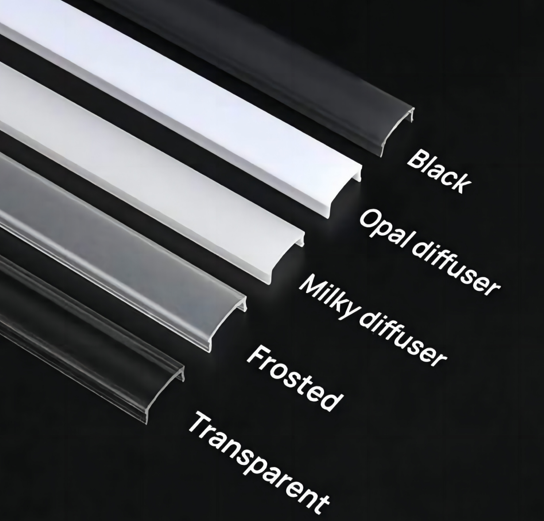
4.Choosing the Right LED Strip
When pairing an LED strip with an aluminum profile, consider the following factors:
- Color Options
Select colors based on design requirements. Common options include:- Single Color: Red, Yellow, Blue, Green, White.
- Dual Color: Warm white and cool white.
- Multicolor (RGB): Provides versatile color-changing options.
- Addressable Color: Individual LEDs can display unique colors simultaneously.
- Recommended LED Strips:Single Color Series
-
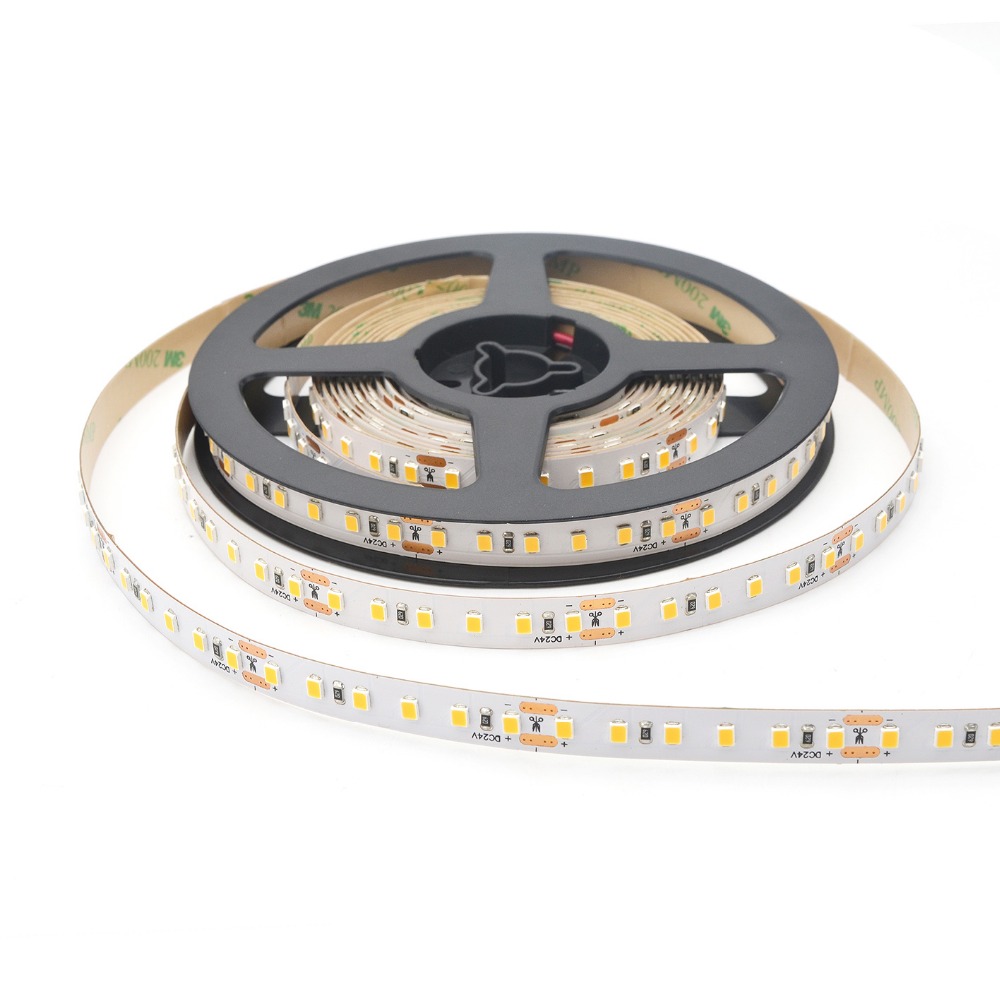
2835 LED Strip
-
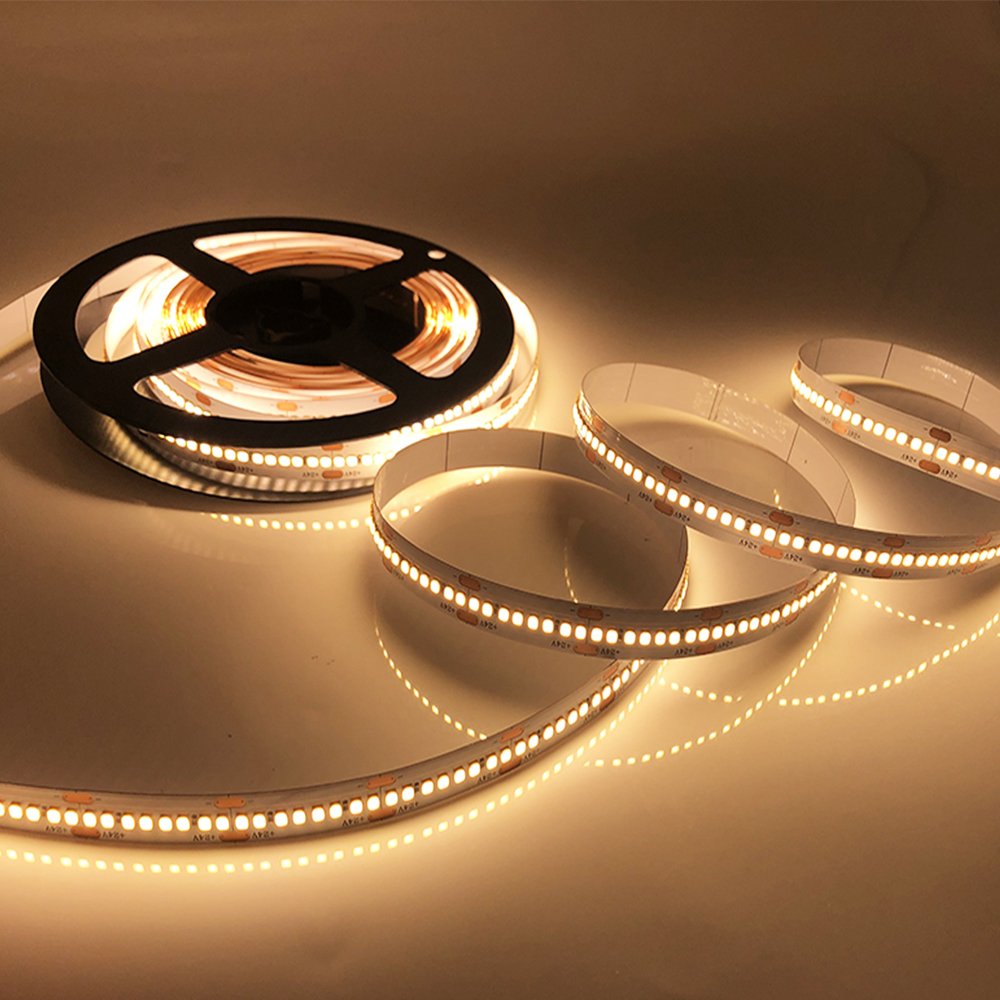
2018 LED Strip
-
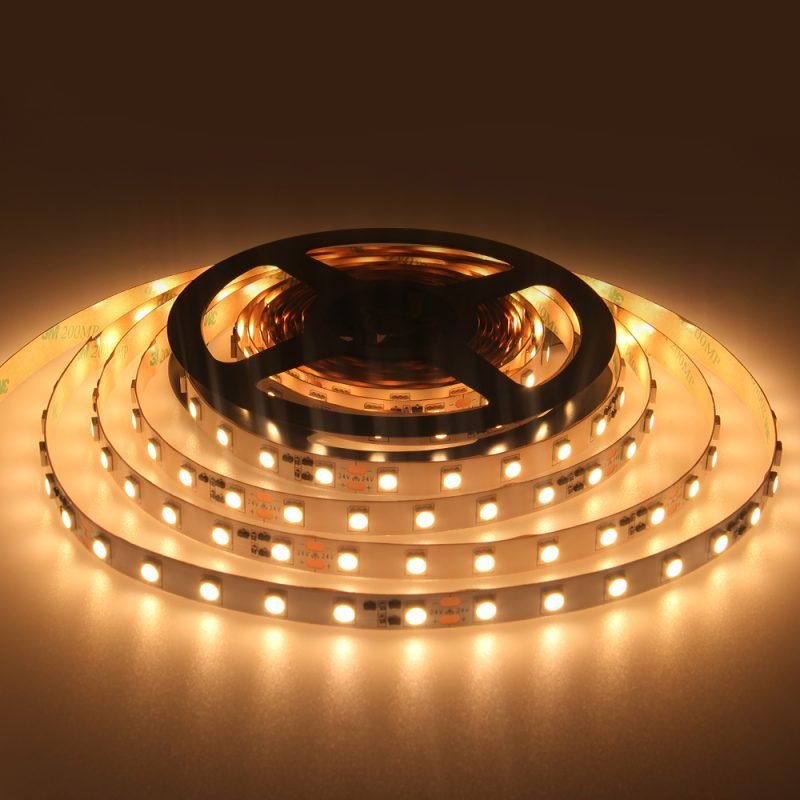
5050 LED Strip
-
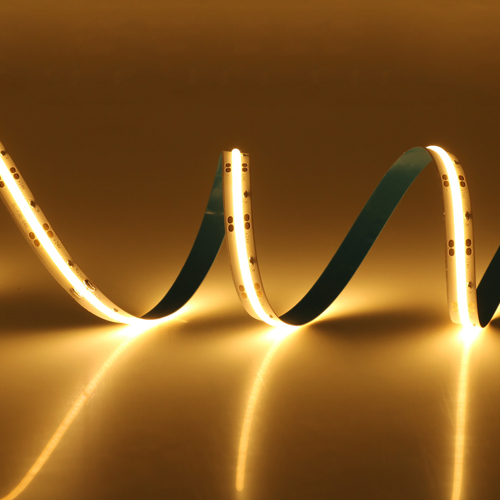
COB LED Strips
- Recommended LED Strips:Dual Color Series
-
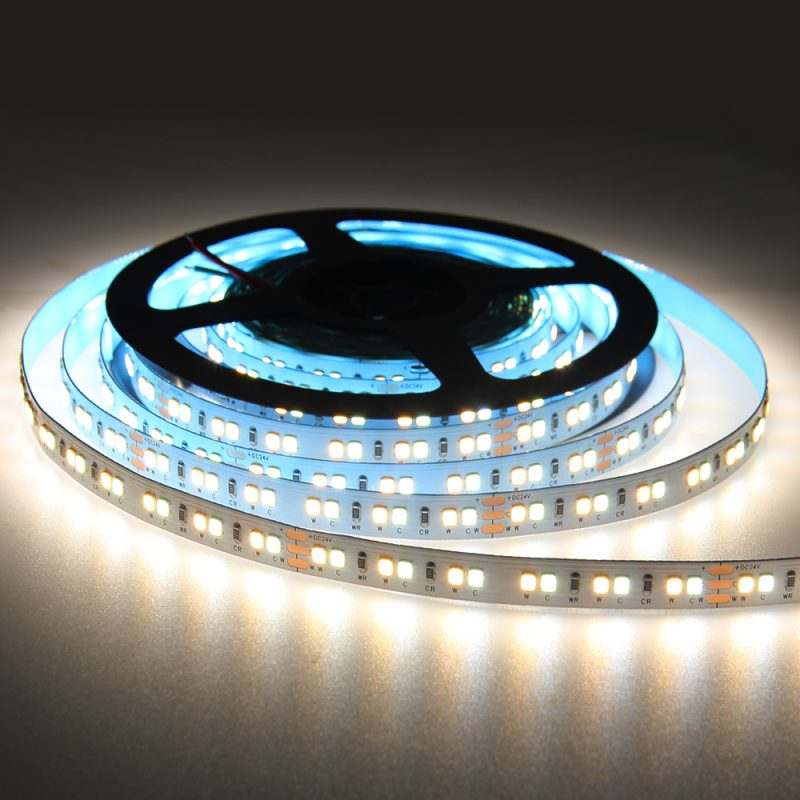
SMD 2835 Dual Color LED Strip
-
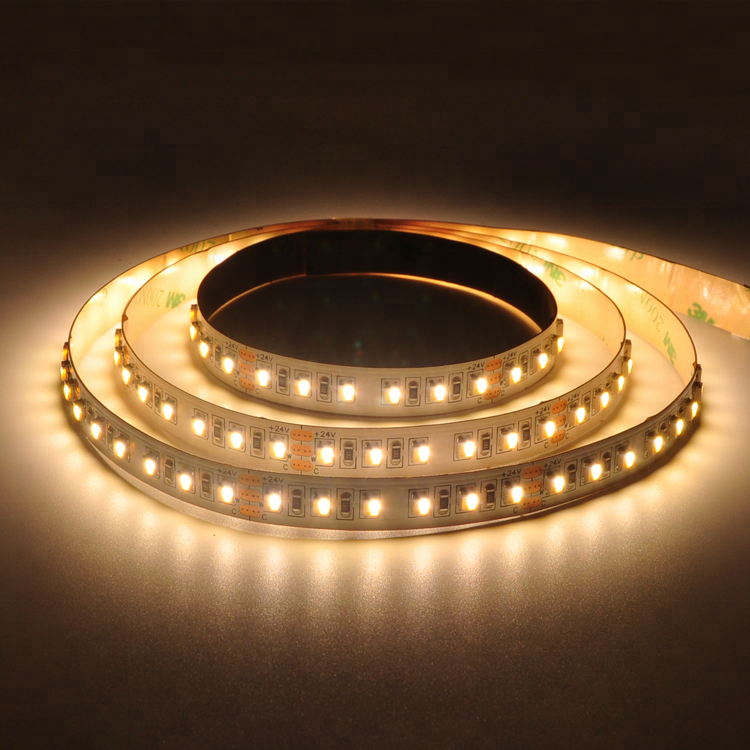
3527 2in1 Dual Color LED Strip
-
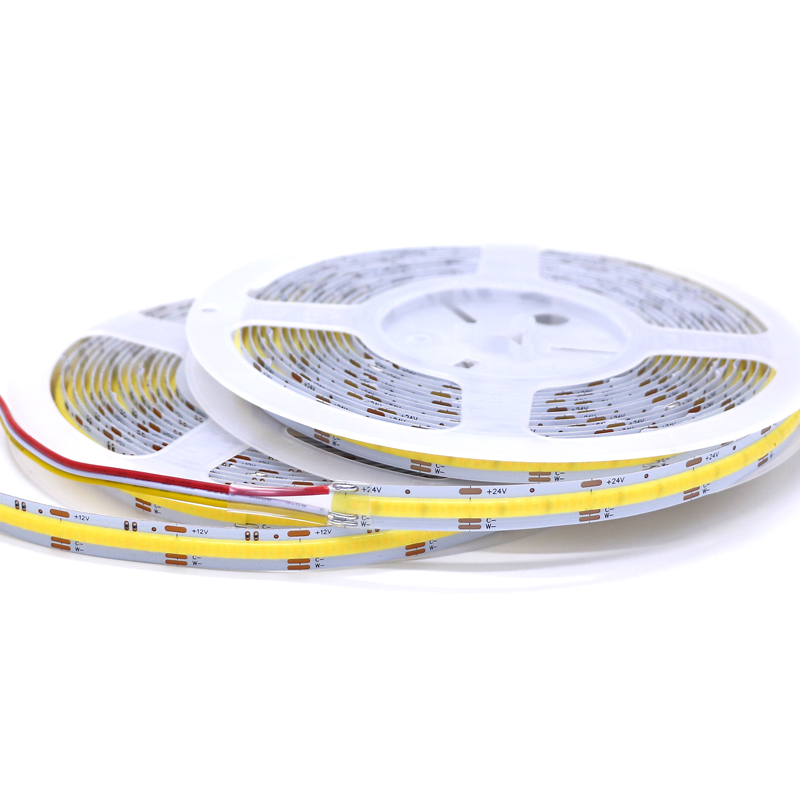
Dual Color COB LED Strip
-
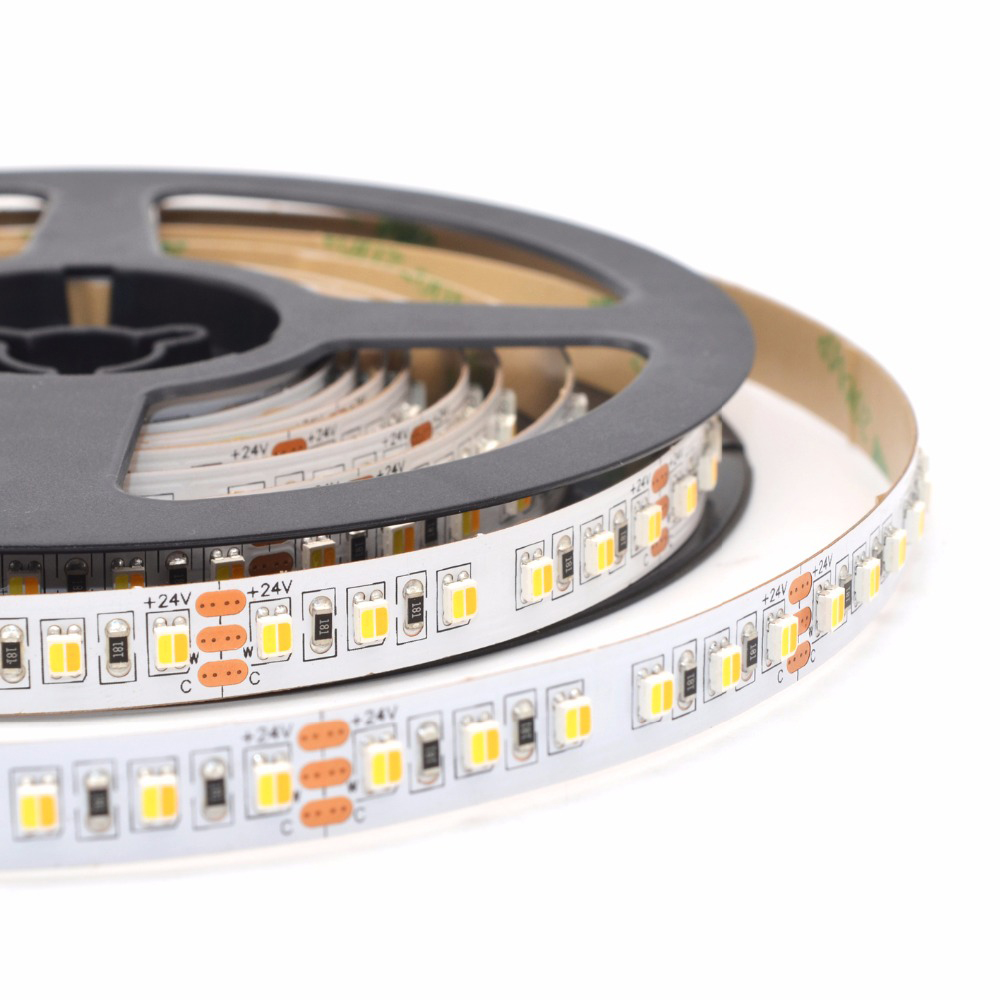
3527 2in1 Dual Color LED Strip
- Recommended LED Strips:Multi-Color LED Strip Series
-
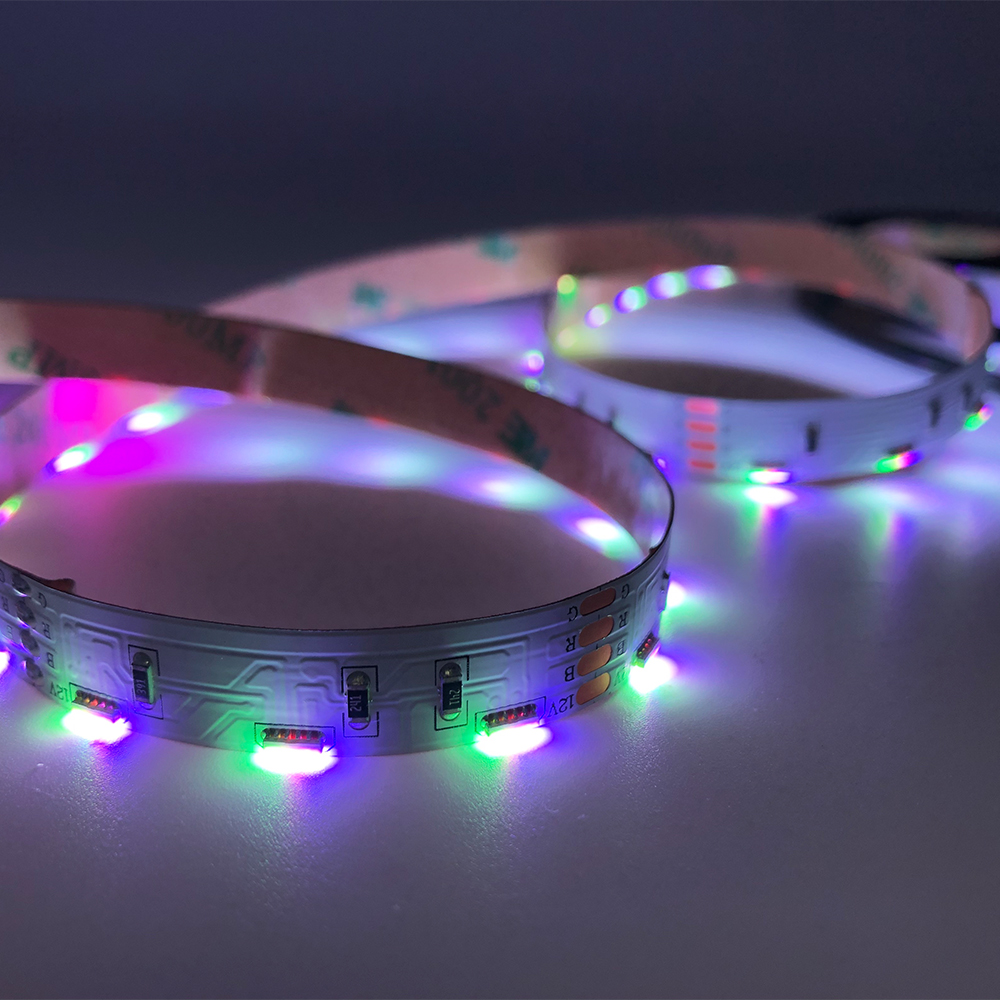
020 RGB Side Emitting LED Strip
-
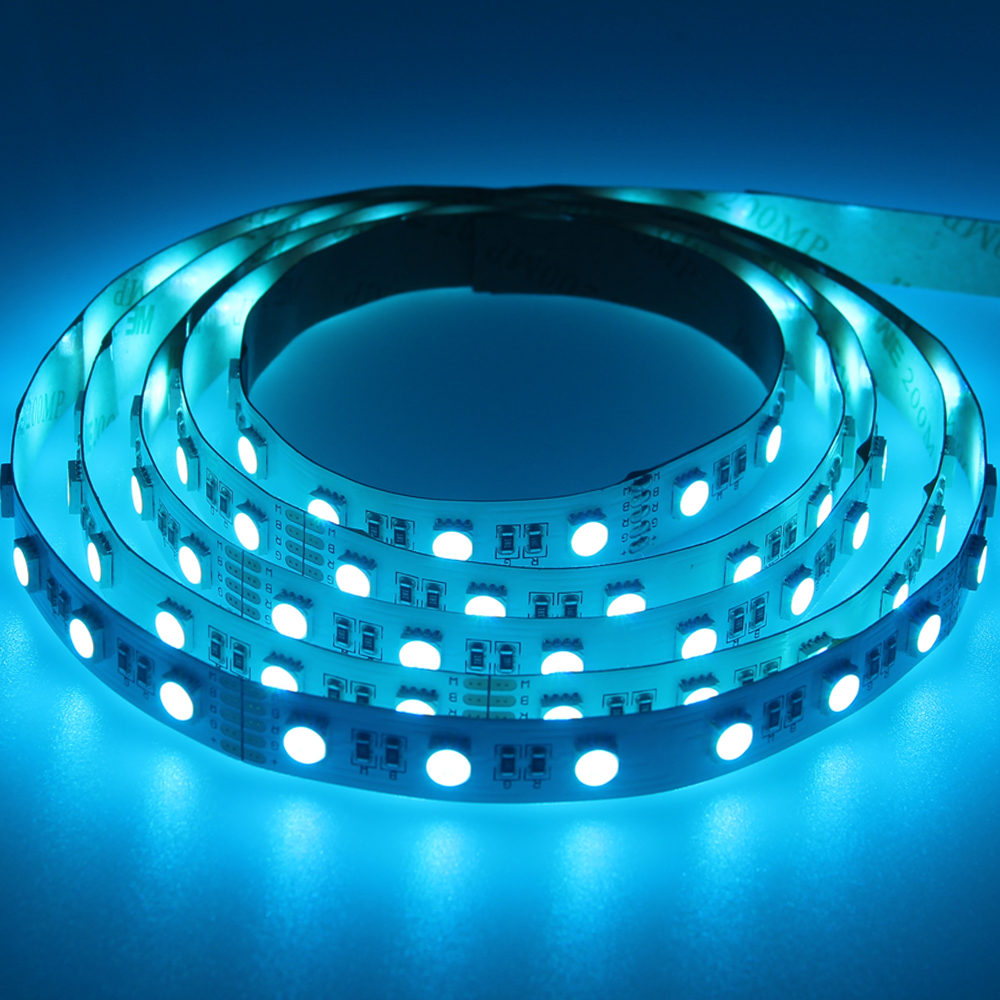
4in1 5050 RGBW LED Strip
-
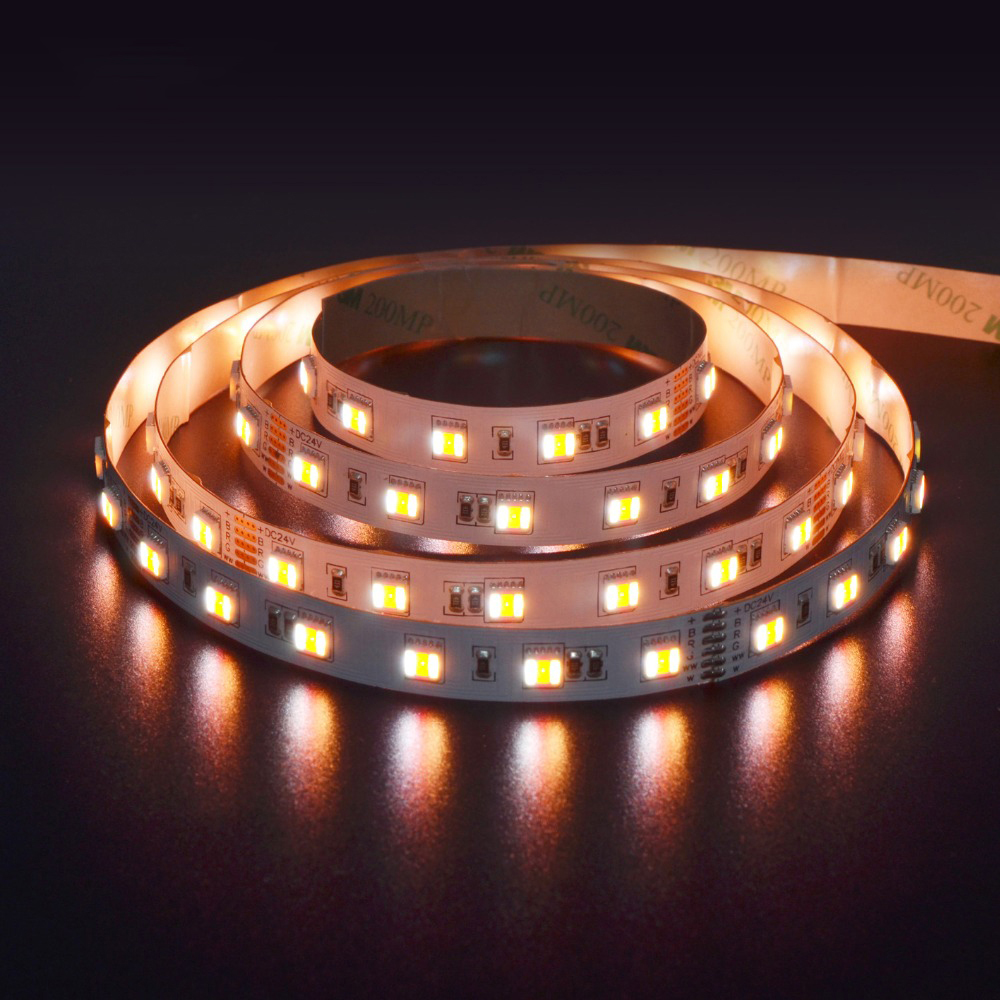
5in1 LED Strip
-

COB RGBW LED Strip
- Recommended LED Strips: Addressable RGB LED Strip
-
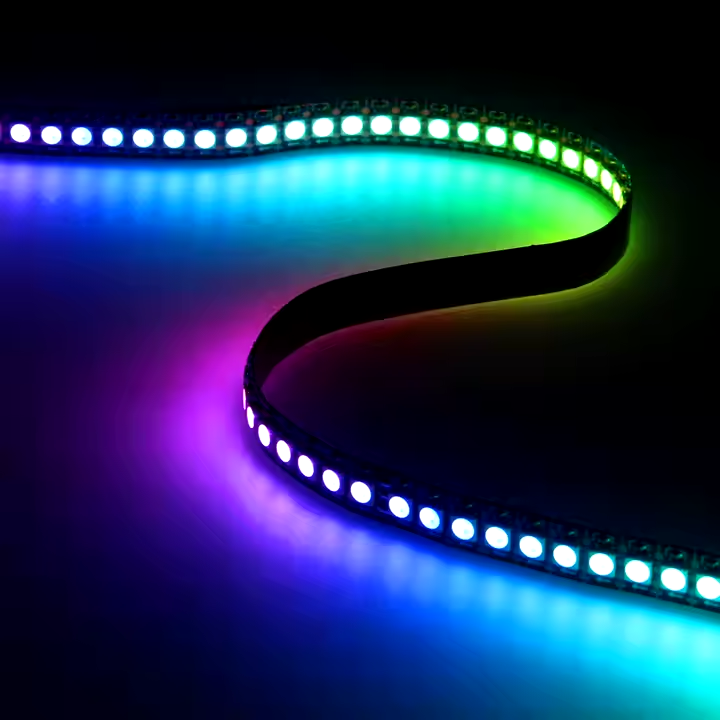
Ws2812 B LED Strip
-
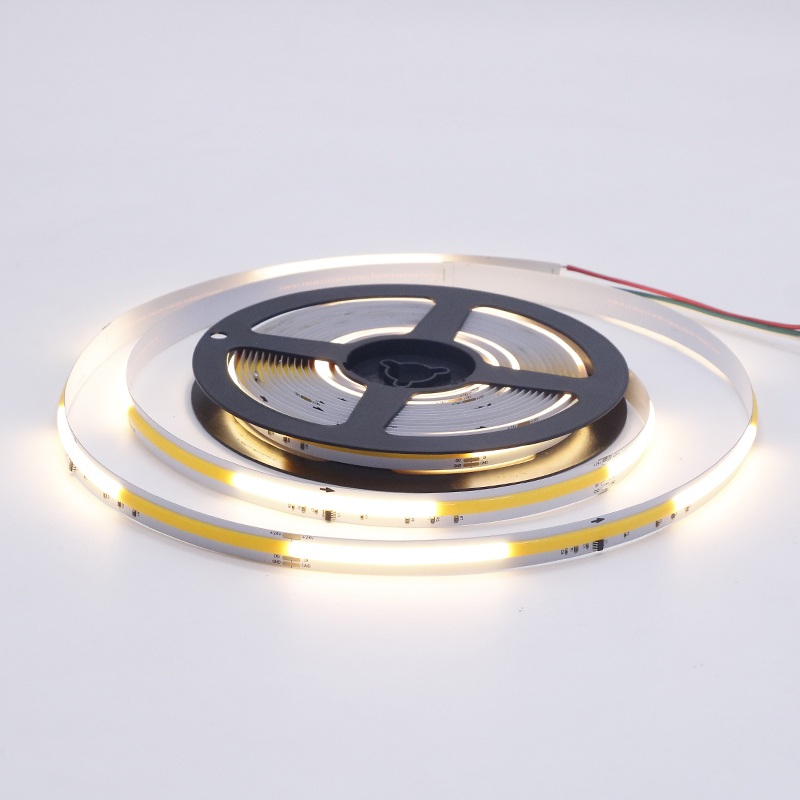
Digital White COB LED Strip
-
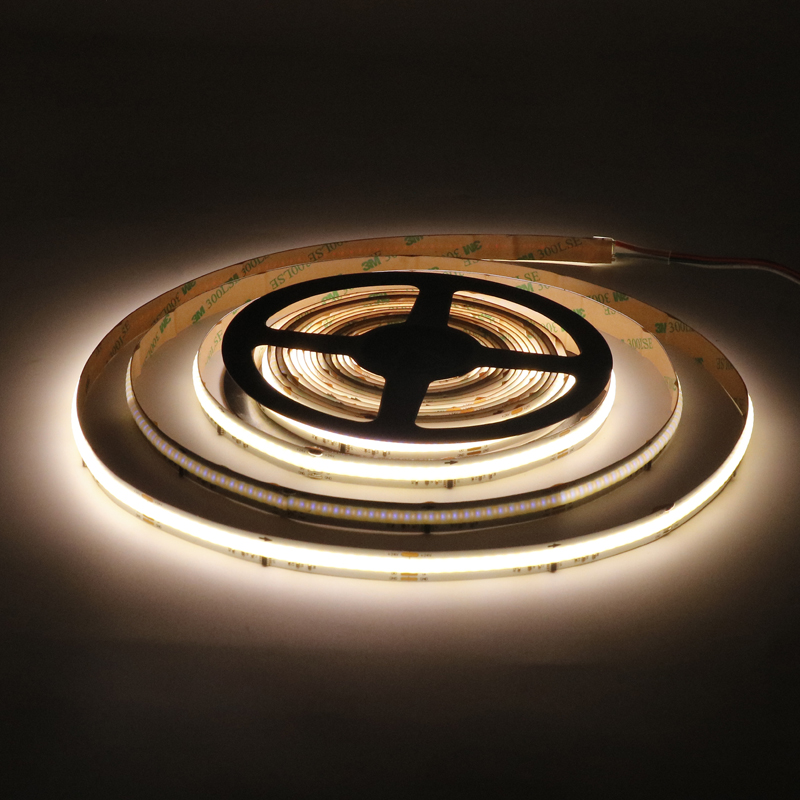
Addressable CCT COB LED Strip
-
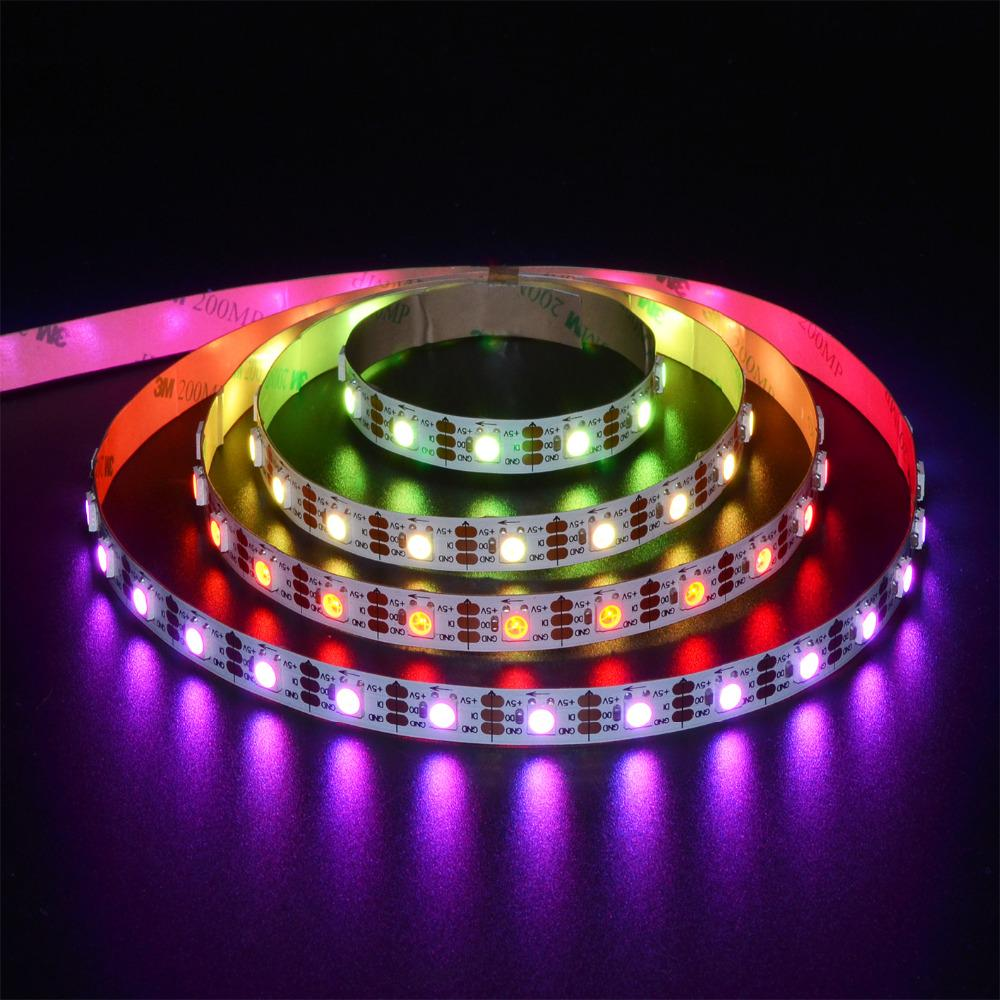
Ws2812B LED Strip
5.Voltage Compatibility
Ensure the voltage of the LED strip matches the power supply: 5V, 12V, or 24V.
6.Width Compatibility
Match the width of the LED strip to the chosen aluminum profile.
7.LED Density
Choose based on light intensity and spotlessness:
-
- 30 LEDs/m: Standard brightness.
- 60 LEDs/m: Enhanced brightness.
- 120 LEDs/m or COB strips: High density for no visible spots.
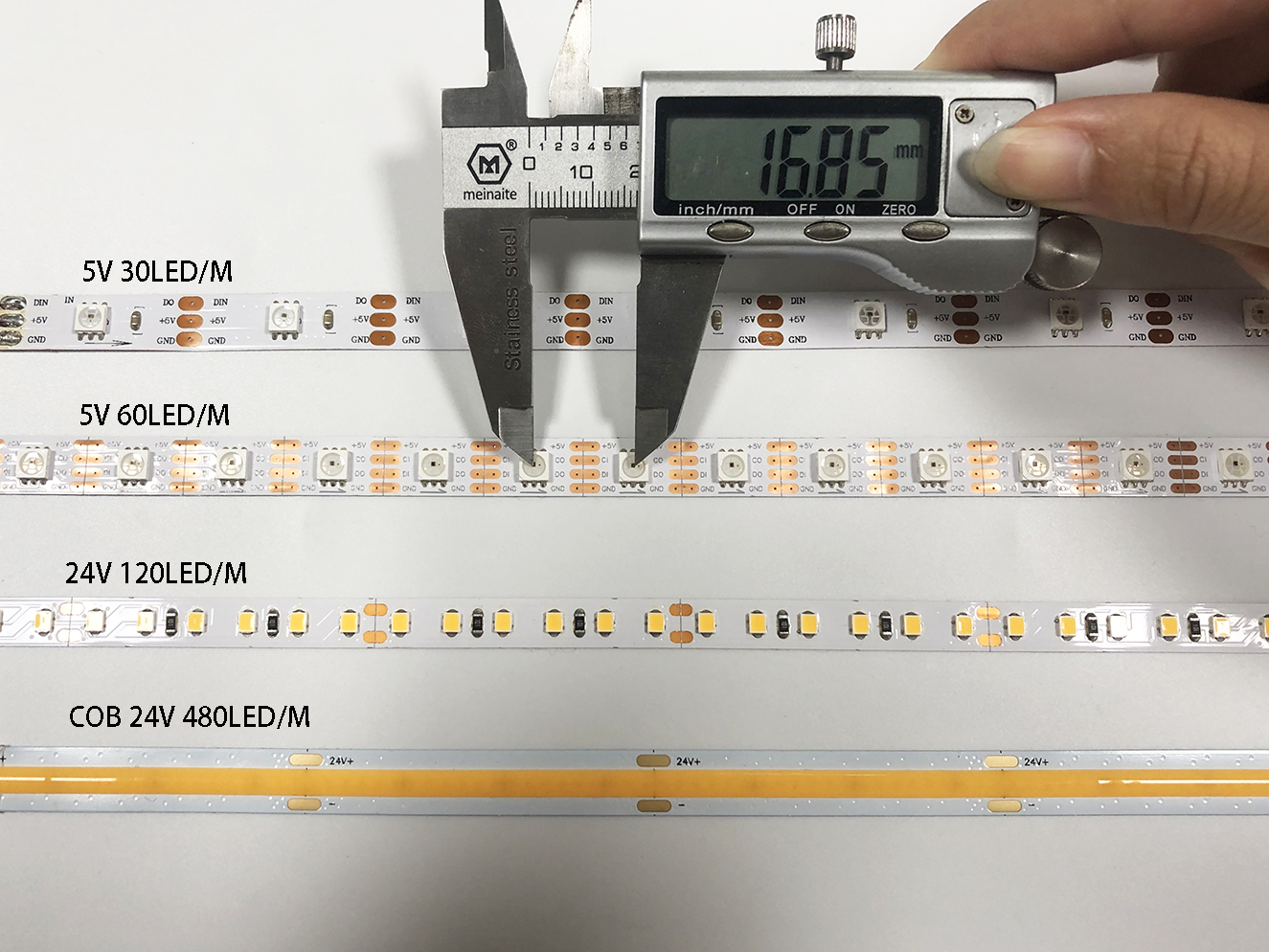
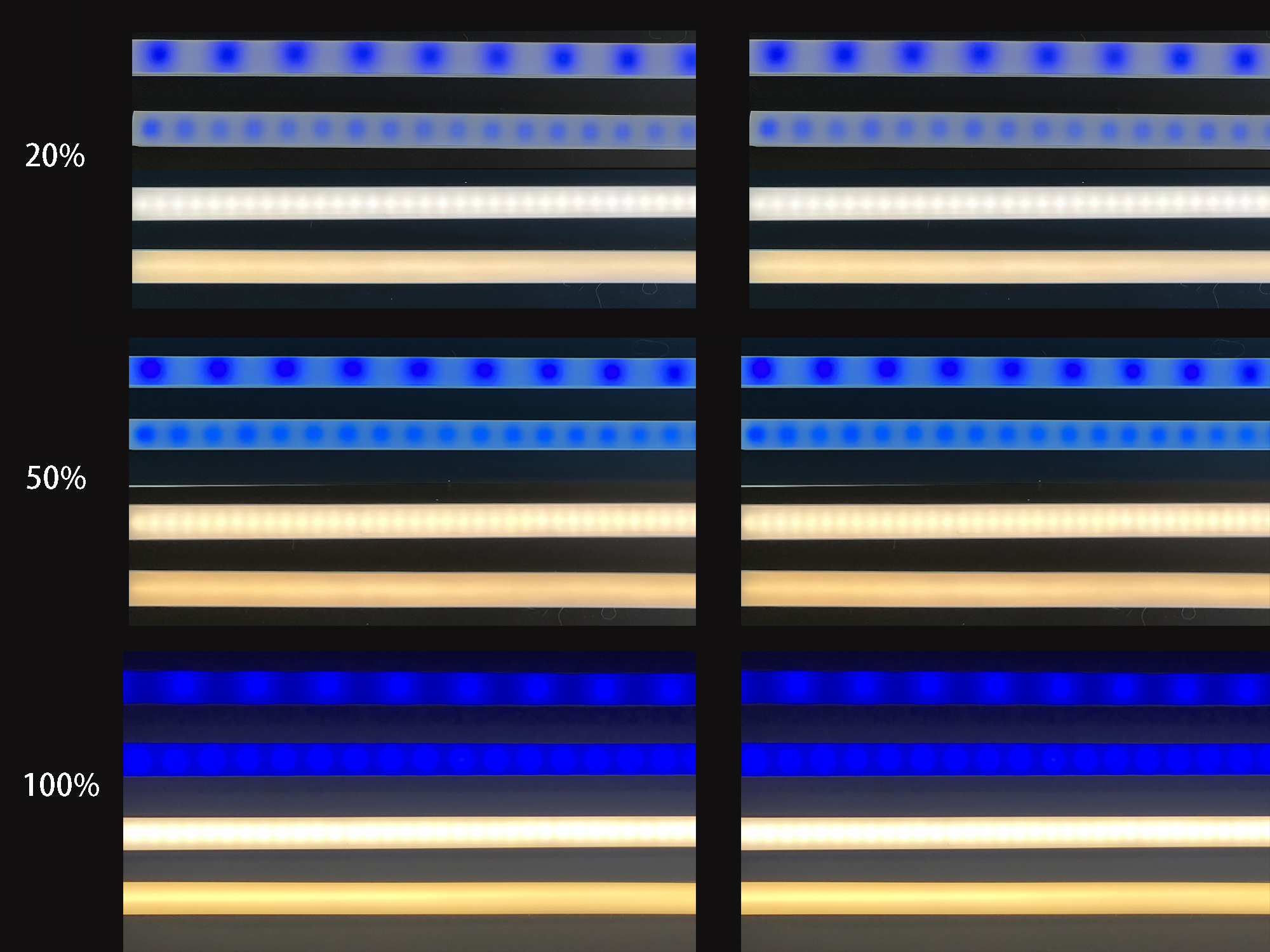
COB LED Strips Recommendation:
COB LED strips are ideal for use with aluminum profiles as they feature higher LED densities, resulting in spotless and uniform light, regardless of the profile depth or cover type.
-

Cut Free Cob Led Strip
-

COB LED Strip
-
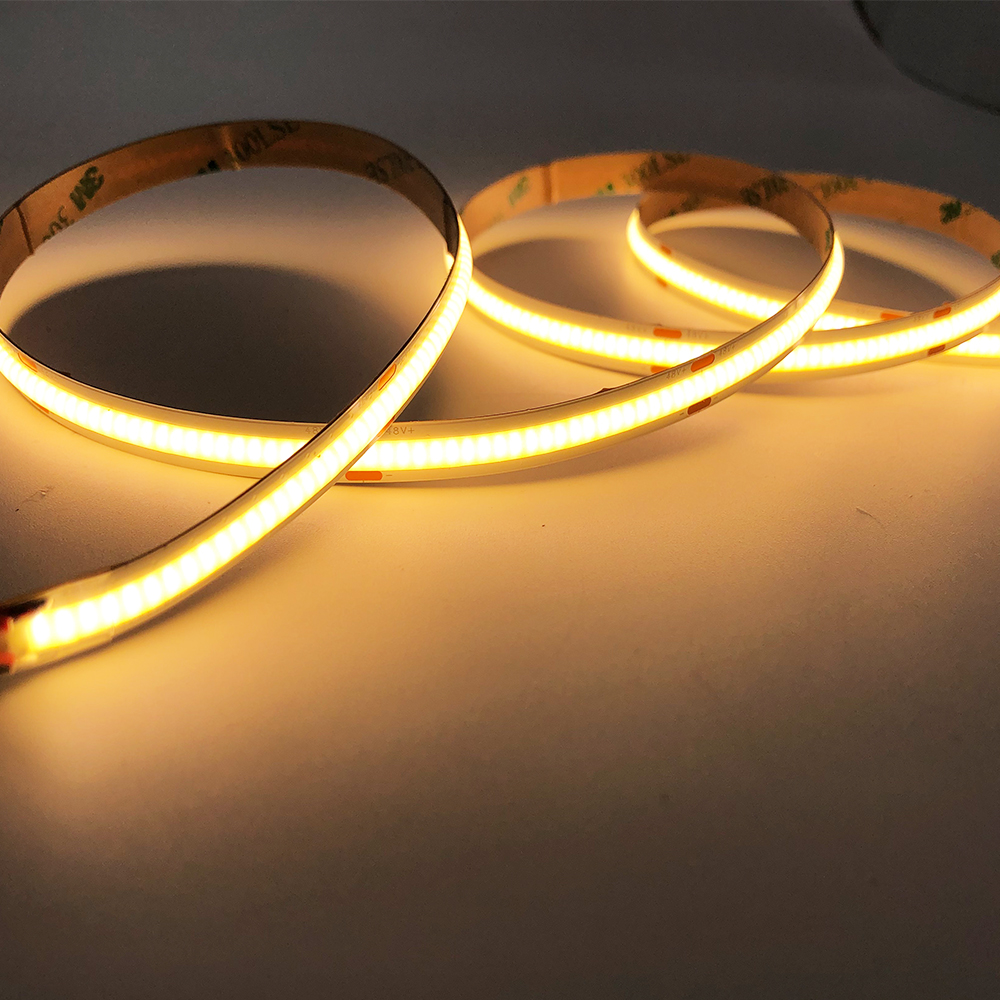
48V COB LED Strip
-
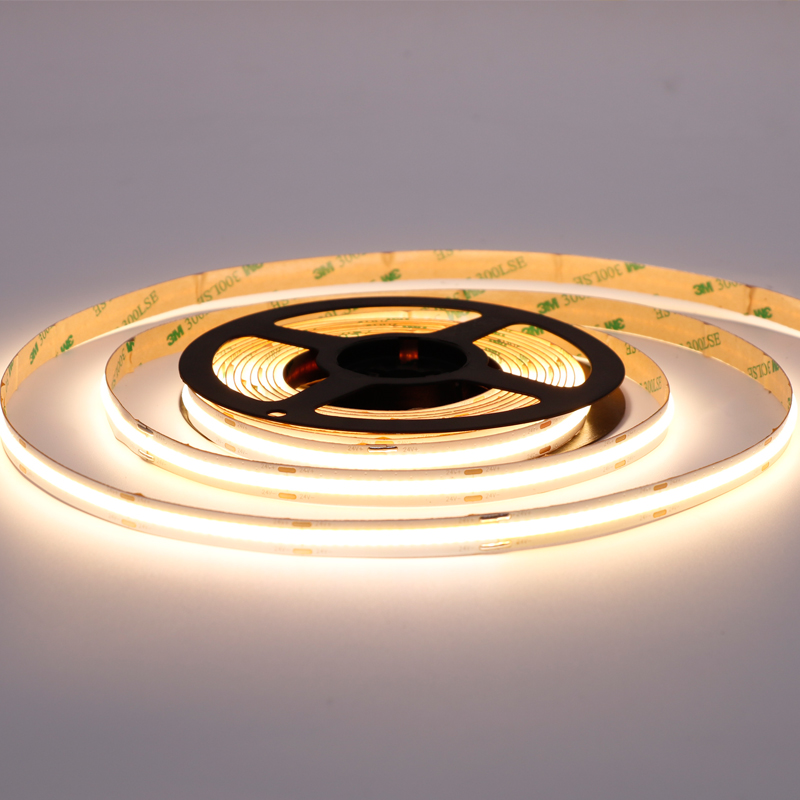
4000K COB LED Strip
Mounting LED Strips to Aluminum Profiles
Follow these steps for a clean and professional installation:
-
Prepare Materials
Gather aluminum profiles, LED strips, covers, and any necessary accessories. Cut all components to the desired lengths. -
Clean the Aluminum Profile
Ensure the interior of the aluminum profile is dust-free for optimal adhesion. -
Apply the LED Strip
Remove the adhesive backing and carefully align and attach the LED strip inside the profile. -
Check the Lighting
Test the LED strip to ensure it works correctly. -
Secure the Ends
Seal the profile ends with end caps to protect the LED strip and wiring. -
Final Assembly
Attach the cover, mount the profile, and perform a final lighting check.
Mounting Methods for Aluminum Profiles
- Ceiling Mount
Ideal for general lighting and modern aesthetics. - Corner Mount
For shelves, cabinets, or any angular applications. - Suspended Mount
Perfect for offices or commercial spaces requiring pendant-style lighting. - Surface Mount
For simple, flat surface installations. - Recessed Mount
Hidden within walls or furniture for seamless lighting effects.
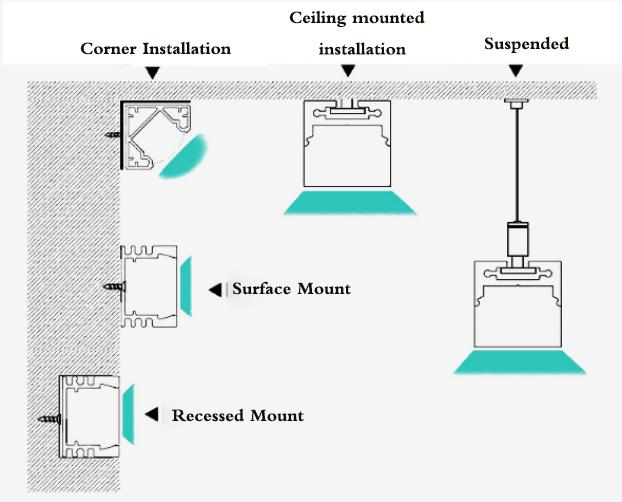
Thick vs. Thin Aluminum Profiles
The aluminum profiles for LED strips provide outer protection while enhancing the appearance of the strips. The profiles help scatter the light, making the installation look clean and tidy. Additionally, they offer heat dissipation for the LEDs, extending their lifespan and preventing overheating.
Thick Aluminum Profiles
- Thickness: 1.0–3.0mm
- Ideal for high-power LED strips (≥30W/m).
- Superior heat dissipation and durability.
Thin Aluminum Profiles
- Thickness: 0.5–1.0mm
- Suitable for low-power LED strips (≤10W/m).
- Lightweight, compact, and ideal for small spaces.

Summary
Selecting the right aluminum profile ensures optimal performance and aesthetics for your LED strips. Evaluate the thickness, width, cover type, and application environment to find the best fit. With LEDWorker’s vast selection, high-quality materials, and customization options, you can confidently create efficient and visually stunning lighting solutions tailored to any project.
LED Aluminum Profile Applications
-
1. Residential Lighting
In homes, aluminum profiles are commonly used for:
- Kitchens: Under-cabinet lighting or countertop illumination for functional and aesthetic purposes.
- Living Rooms & Bedrooms: Hidden lighting to create a warm and inviting ambiance.
- Shelves & Cabinets: Highlighting bookshelves, wine cabinets, or display cases.
- Hallways & Corridors: Subtle accent lighting to enhance navigation and decor.
Key Benefits:
- Hidden Illumination: Profiles help achieve the "light without the fixture" effect.
- Enhanced Ambiance: Adds sophistication and warmth to home interiors.
-
2. Outdoor Lighting
When paired with waterproof LED strips, aluminum profiles are ideal for:
- Landscapes & Parks: Green LED strips can enhance trees and plants, while warm lights can outline paths, ponds, or lakes.
- Buildings & Balconies: Profiles accentuate architectural lines, creating dramatic nighttime visuals.
- Gardens & Patios: Adds elegance and functionality to outdoor spaces, improving safety and aesthetics.
Key Benefits:
- Durability: Aluminum profiles with waterproof strips withstand outdoor conditions.
- Versatile Design: Supports creative lighting for landscapes, pools, and facades.
-
3. Commercial Lighting
In commercial spaces, aluminum profiles elevate the lighting design in:
- Shopping Malls: Define zones, create layers, and establish a comfortable shopping atmosphere with warm LED strips.
- Hotels: Corner-mounted profiles add a high-end feel, while suspended profiles offer ambient lighting in lobbies or ballrooms.
- Restaurants: Ceiling-mounted profiles ensure uniform illumination, fostering a welcoming dining environment.
Key Benefits:
- Professional Look: Profiles provide clean, modern lighting setups.
- Enhanced Experience: Creates inviting spaces for customers and guests.
Conclusion
LED aluminum profiles are indispensable for achieving professional, aesthetically pleasing, and functional lighting in a variety of environments. Whether it's residential, outdoor, or commercial lighting, these profiles ensure a seamless and sophisticated lighting experience. With LEDWorker Lighting's diverse product range, you can find or customize the perfect aluminum profile for any project.
FAQs
Here are top asked questions, feel free to contact us for more details.
-
What is an LED Aluminum Profile?
An LED aluminum profile is an accessory for LED strips that helps with heat dissipation, protects the LED strip, and offers easy installation. These profiles come in various shapes and sizes to fit different lighting needs.
-
What is the Most Common Aluminum Profile?
We are here for all your business needs and questions.
Drivers
LED Driver
- Options: Available in dimmable, non-dimmable, and adapter power supply versions.
- Power Range: Multiple power options ranging from 36W to 500W.
- Protection: Offers short-circuit protection, overload protection, and overvoltage protection for enhanced safety.
- Design: IP20 and IP67 options for indoor and outdoor use, featuring an aluminum housing for efficient heat dissipation.
- Customizable: Supports customization of various plug types to meet specific requirements.
- Cost-Effective: High reliability at a competitive price point.
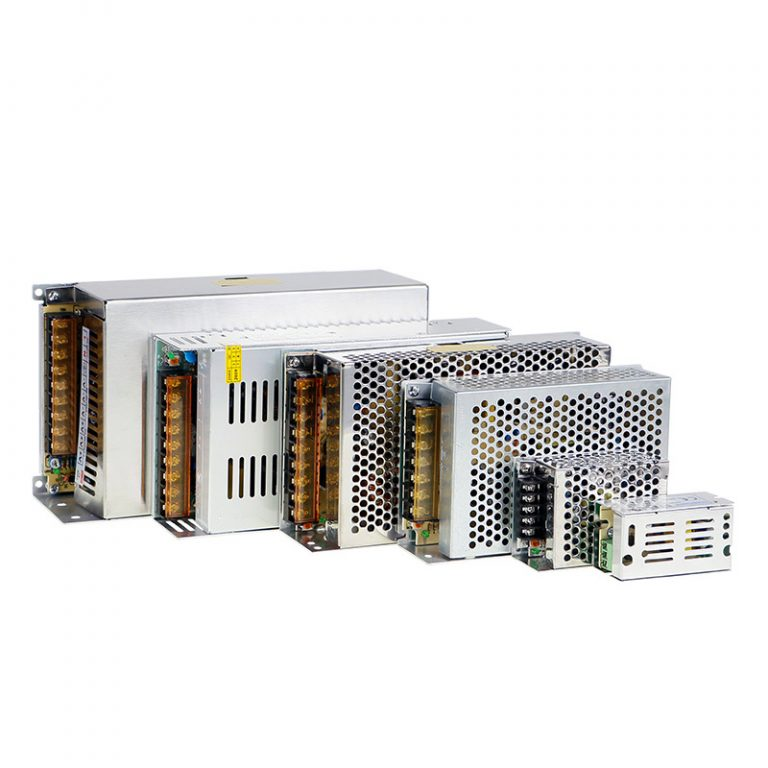
What is an LED Driver?
-
IP20 Non Dimmable Drivers
-
IP65 Non Dimmable Drivers
-
IP65 Mains Dimmable Drivers
-
Slim Non Dimmable Drivers
-
Adptor
Details of Product Categories
1. MeanWell Drivers
MeanWell is a trusted brand in the industry, offering power solutions ranging from 20W to 500W. With output voltages including 5V, 12V, and 24V, and input voltage of 100-240V AC, these drivers are suitable for both waterproof and non-waterproof applications. Renowned for their quality, performance, and stability, MeanWell drivers prevent overloading and overheating, making them ideal for engineering projects across various conditions.

2. Non-Dimmable Drivers
Non-dimmable drivers are cost-effective solutions designed for applications where brightness remains consistent without the need for dimming.
- Power Range: 36W to 300W.
- Applications: Ideal for projects requiring stable illumination without brightness adjustments.
- Options: Available in waterproof and non-waterproof versions.

3. Mains Dimmable Drivers
Mains dimmable drivers enable brightness adjustment from bright to dim, making them suitable for dynamic lighting environments.
- Power Range: A wide range to support diverse industry requirements.
- Applications: Perfect for environments where adjustable brightness is needed, such as residential and commercial spaces.
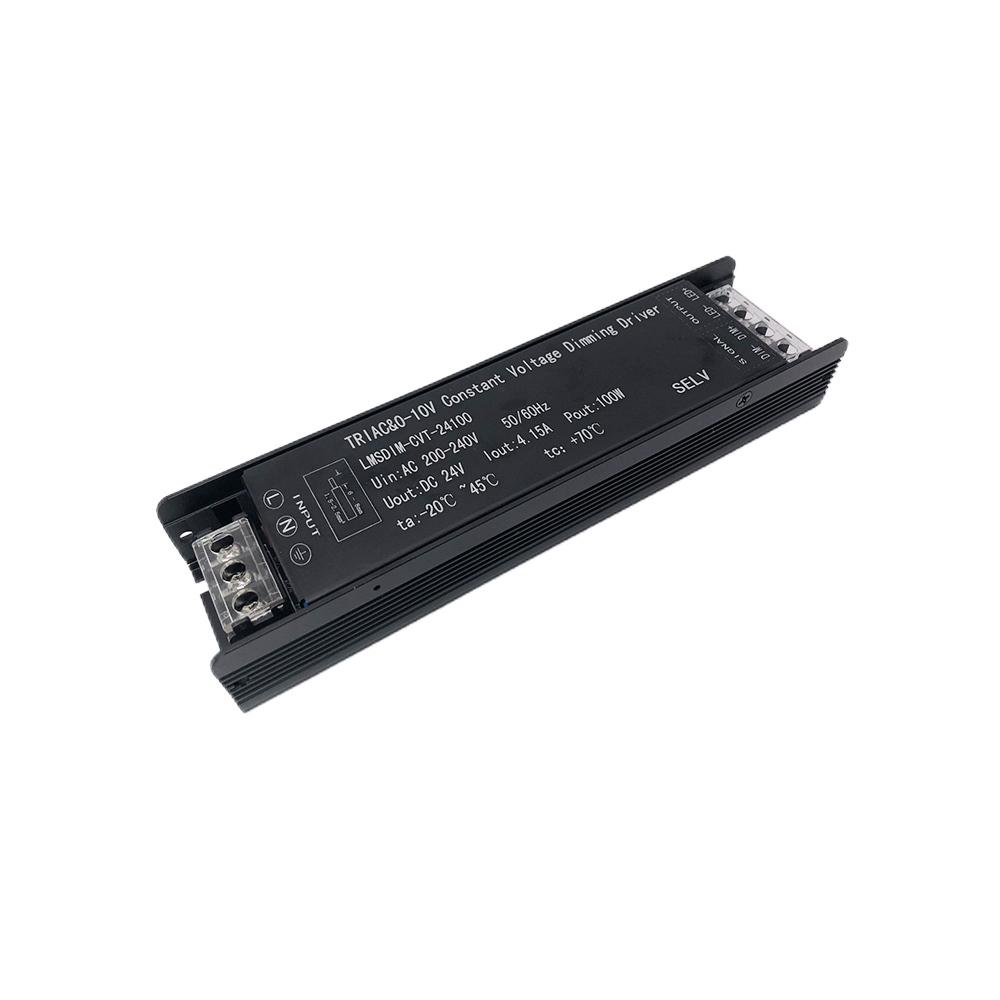
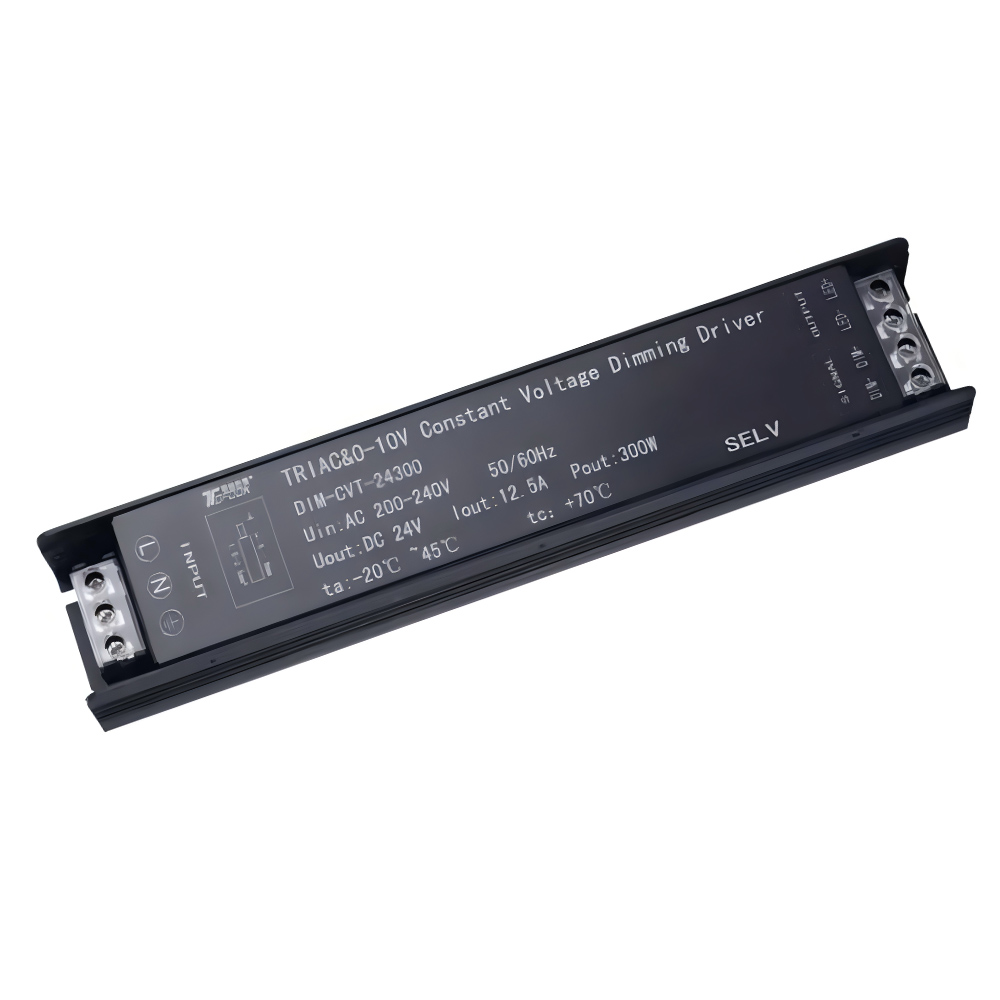
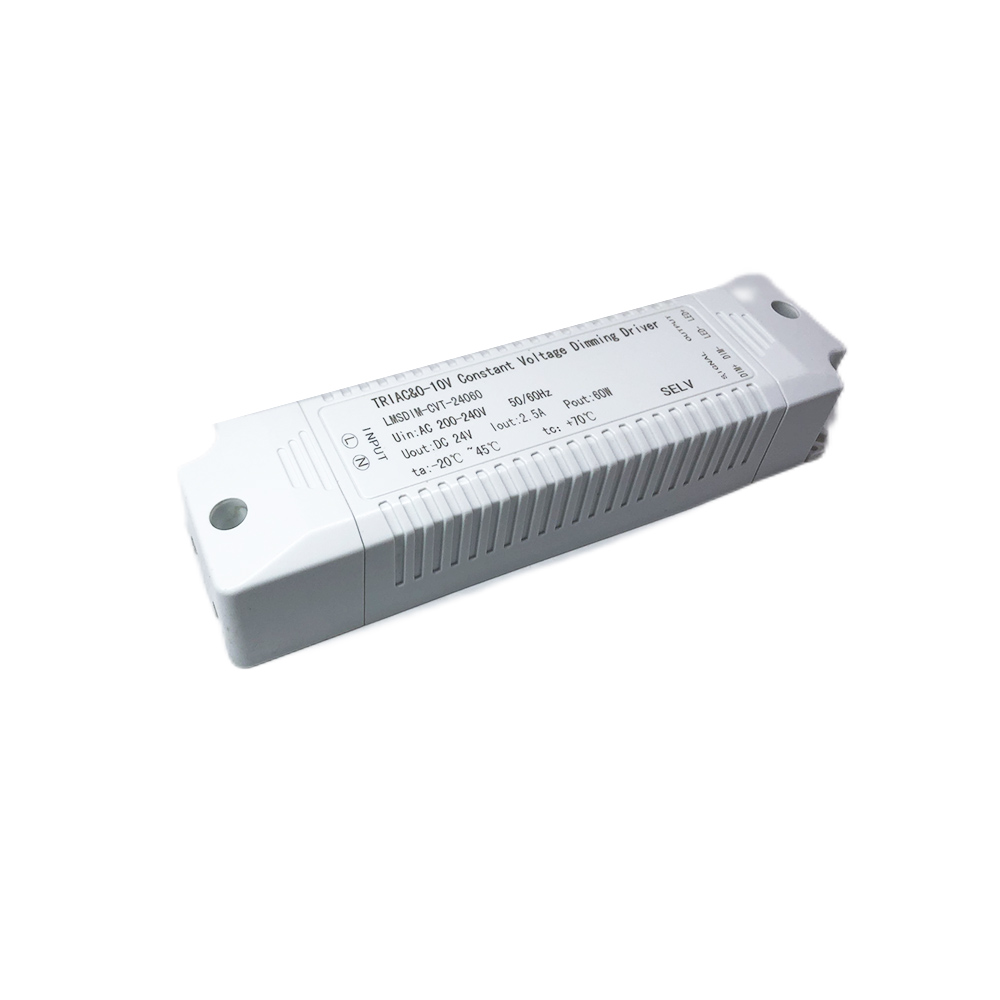
4. Slim Non-Dimmable Drivers
Slim non-dimmable drivers are compact and thin, designed for space-restricted installations.
- Features: Constant current output ensures stable operation of LED strips.
- Applications: Commonly used in ceiling lights, panel lights, and other installations requiring hidden power supplies.
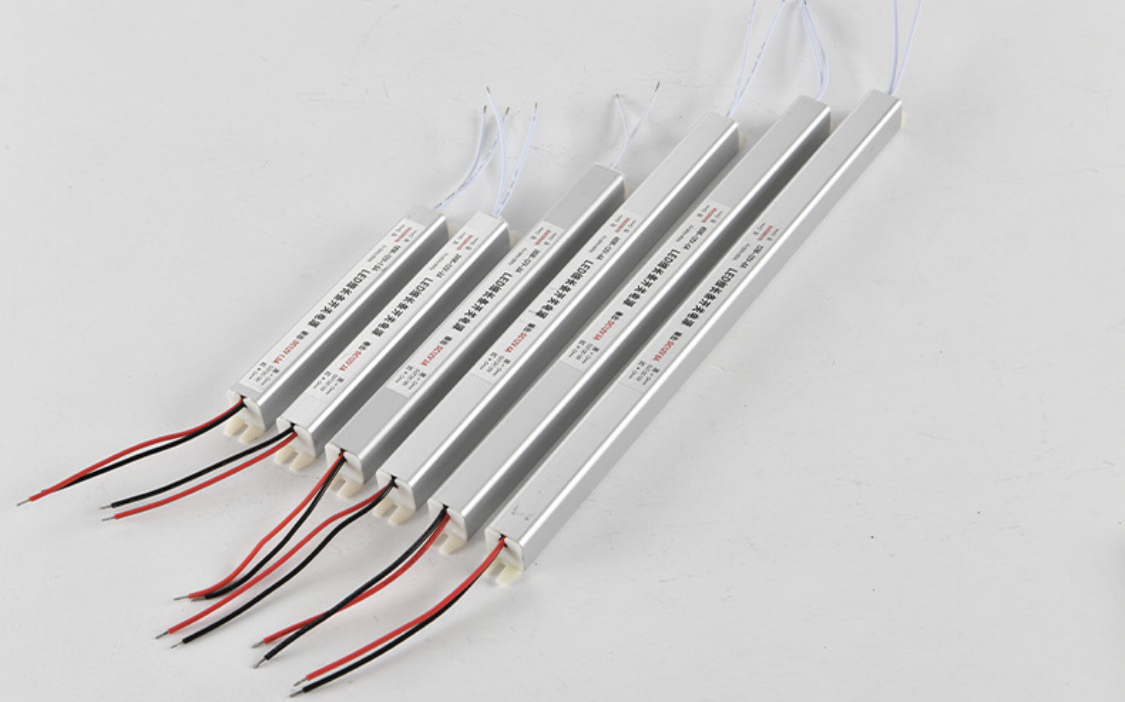
5. Adaptor Drivers
Adaptor drivers are compact, lightweight power supplies for converting AC to 5V, 12V, or 24V DC.
- Features: Typically rated around 60W, ideal for low-power LED applications.
- Applications: Widely used in ambient lighting and LED strip kits for ease of installation.

Why Choose LEDWorker?
LED drivers are essential for protecting and enhancing the lifespan of LED strips. They include:
- Overload Protection: Safeguards against damage caused by excessive power, ensuring the durability of LED strips.
- Short-Circuit Protection: Automatically cuts off power output during circuit faults, preventing overcurrent damage.
- Overvoltage Protection: Disconnects or reduces the voltage to prevent equipment damage when the voltage exceeds safe levels.
- Stability and Reliability: LED drivers are designed for high stability, featuring lightning, waterproof, and explosion-proof capabilities, making them suitable for harsh environments.
How to Choose the Right Power Supply
1.Identify the Type and Quantity of LED Strips:
- Determine the strip type: SMD 2835, SMD 5050, or COB.
- Select LED density: 60/m, 120/m, or 320/m.
- Choose the voltage: 5V, 12V, or 24V.
- Estimate the total number of strips required for the project.
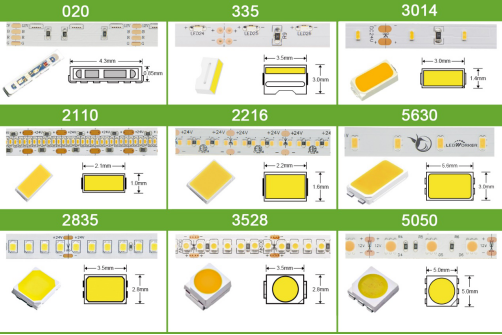
2.Calculate the Power Requirement:
- Use the LED type, density, voltage, and total length to calculate power needs.
- Factor in a 20% margin for stable power supply operation.
Example: For a 5-meter 5050 strip with 60 LEDs/m: - Power per meter = 12W.
- Total power = 12W×5×1.2=72W12W \times 5 \times 1.2 = 72W.
Below is a power table for various LED strips:
| SMD type | SMD per M | Voltage | Watts / M | SMD type | SMD per M | Voltage | Watts / M |
| 2835 | 60 SMD/M | 12V/24V |
|
5050 | 30 SMD/M | 12V/24V | 7W |
| 2835 | 60 SMD/M | 12V/24V | 8W | 5050 | 60 SMD/M | 12V/24V | 14.4W |
| 2835 | 120 SMD/M | 12V/24V | 14.4W | 5050 | 120 SMD/M | 12V/24V | 24W |
| 2835 | 240SMD/M | 12V/24V | 20W | 5730 | 60 SMD/M | 12V/24V | 14W |
| 3528 | 30 SMD/M | 12V/24V | 2W | 335 | 60 SMD/M | 12V | 5W |
| 3528 | 60 SMD/M | 12V/24V | 4.8W | 5050 4in1 | 60 SMD/M | 12V/24V | 18W |
| 3528 | 120 SMD/M | 12V/24V | 7.2W | 5050 4in1 | 84 SMD/M | 12V/24V DC | 24W |
| 3528 | 240 SMD/M | 12V/24V | 16W | 5050 5in1 | 60 SMD/M | 12V/24V DC | 20W |
| 020 | 60 SMD/M | 12V | 5W | 5050 5in1 | 96 SMD/M | 12V/24V DC | 28W |
Note: Actual power may vary from theoretical values due to production differences.
3.Consider the Location:
- Outdoor or Wet Areas: Use waterproof power supplies (IP67).
- Indoor Use: Non-waterproof power supplies are sufficient.
For compact spaces, use multiple smaller power supplies strategically placed.
How to Connect LED Driver/Transformer to Flexible LED Strips
Choose the Right Plug: Select a plug type based on regional standards (e.g., EU or US plug) and connect it to the power input terminal.
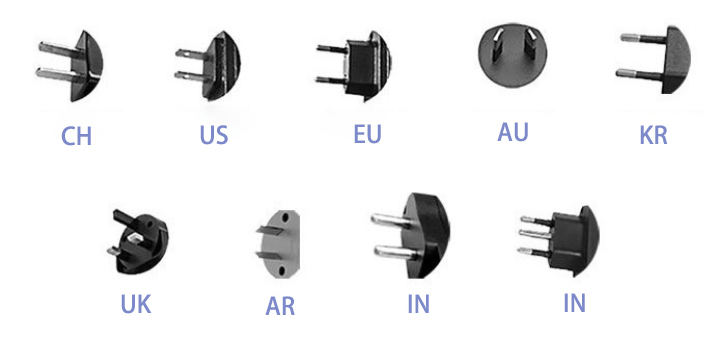
Connect to the LED Strip:
Attach the red wire to the positive terminal and the black wire to the negative terminal of the power supply.
Ensure screws are tightened securely, and the strip is firmly connected to the driver.
Watch the video tutorial: How to Connect LED Driver
For further assistance, contact our 24/7 support team for expert advice tailored to your needs!
LED Driver Application
LED drivers are essential for ensuring the safety, reliability, and stable operation of LED strips. By connecting to LED strips, they regulate the power supply to ensure proper functionality and control of illumination while optimizing energy efficiency. Their versatility allows them to play a vital role across various applications, including:
-
1. Indoor Lighting
Enhances ambient, task, and accent lighting in residential and commercial spaces.
-
2. Outdoor Lighting
Powers LED strips for landscape, architectural, and pathway lighting.
-
3. Automotive Lighting
Provides reliable power for vehicle LED applications, such as interior lighting and decorative trims.
-
4.Display Screens and Billboards
Ensures stable performance of LED displays and digital signage in diverse environments.
-
5.Decorative Lighting
Supports dynamic and aesthetic lighting for events, festivals, and installations.
LED drivers have become an indispensable component of modern lighting solutions, offering enhanced control, efficiency, and functionality in various settings.
FAQs
Here are top asked questions, feel free to contact us for more details.
-
Why is there a difference between theoretical power and actual power?
There are two reasons: maintaining the power operation of 80% of the Led strip can greatly increase the service life of the led chips; in addition, in order to better improve the luminous efficiency, the thermal energy is converted into light energy to the greatest extent. When the flexible Led strips reaches 24W per meter, its heat dissipation problem must be considered. The usual way to dissipate heat is to stick blue adhesive on the back of the Led strips and stick it to the aluminum profiles to help dissipate heat.
When we calculate the theoretical power, we only need to know the power of a single led chip and then multiply it by the number of led chips.
Taking 5050 SMD 60pcs Led strip per meter as a example, the power per meter is 14.4W, 5050 SMD single chip power 0.24W x number of SMD, 60LEDs= 14.4W/M; conventional 3528 SMD power is 0.08W, 2835 SMD The power is 0.1W or 0.2W, and other led chip models are: 3014, 5630, etc.
-
Does the higher the wattage of the Led strip will be brighter?
In theory, the higher the wattage, the brighter the Led strip will be. But brightness isn’t just determined by wattage, and it can’t be determined by wattage alone. So what are the other factors that determine brightness? The brightness is also related to the number of led chips per meter, the display index, the size of the led chip, and the color temperature. Therefore, the wattage is not the only determinant of brightness. On the contrary, the wattage of the Led strip should not exceed the normal wattage. As mentioned earlier, the wattage is too high and the heat dissipation is not good, which will affect the service life of the Led strip.
-
Is there a way to increase the brightness?
Customers often ask us whether Led strip can achieve 39W or 48W. In fact, there are many ways to improve the brightness. In addition to environmental protection, the biggest advantage of LED is: energy saving. There is really no need for us to increase the wattage of products that were originally energy-saving and become inefficient. At present, our company has made a high-brightness Led strip. The luminous efficiency of the normal Led strip is: 100-110LM/W, our product can achieve 160-170LM/W. The following is his test report, its luminous efficiency The efficiency is 172.6LM/W :
That is to say, in a Led strip with a normal brightness of 100-110LM/W, the brightness of 28W is: 28W x 100LM = 2800LM, but if we use our high-brightness Led strip, 172LM/W, as long as 2800LM / 172LM = about 16W can be realized. It truly achieves high brightness, energy saving and long service life. If you need more information, please contact us.
-
Can quote the price of the Led strip by wattage?
In fact, the wattage alone is not enough to quote. Take the 7.2W Led strip as a comparison, customers generally have the following options:
3528SMD 120led per meter
2835SMD 60led per meter
5050SMD 30led per meter
It is not difficult to see from here that different led chip models and different quantities can make the same wattage. Among them, the highest price is: 3528SMD 120 leds per meter, the most cost-effective is: 2835SMD 60 leds per meter, and their brightness is similar, 2835SMD 60leds per meter will be a little brighter.
-
How do I know which LED driver I need?
You can consult our professional sales team for assistance. Selecting the right LED driver depends on several factors:
- Total Power of the LED Strips: Ensure the driver's capacity meets or exceeds the combined wattage of all connected LED strips.
- Wiring Configuration: Consider the setup and layout of your project to determine the driver's voltage and connection type.
- Application Environment: Determine whether the driver will be used indoors or outdoors, and if it requires waterproofing or other specific features.
We are here for all your business needs and questions.
Connectors
LED Strip Connector
- Solder-Free Design: These connectors are easy to use and allow for quick, solder-free connections, simplifying installation.
- Multiple Shapes Available: Connectors come in various shapes to suit different configurations, such as right-angle, cross, T-type, and inline connectors.
- Waterproof Options: Available in IP20, IP65, and IP67 ratings to accommodate both indoor and outdoor setups.
- Pin Options: They offer multiple pin configurations, including 2PIN, 3PIN, 4PIN, 5PIN, and 6PIN, making them compatible with single color, RGB, RGBW, and other LED strip types.
- Width Compatibility: Designed for LED strips of various widths, including 6mm, 8mm, 10mm, and 12mm.
- Flexible Connection Types: Options for single-side wire, double-side wire, and board-to-board connections provide flexibility for different installation needs.
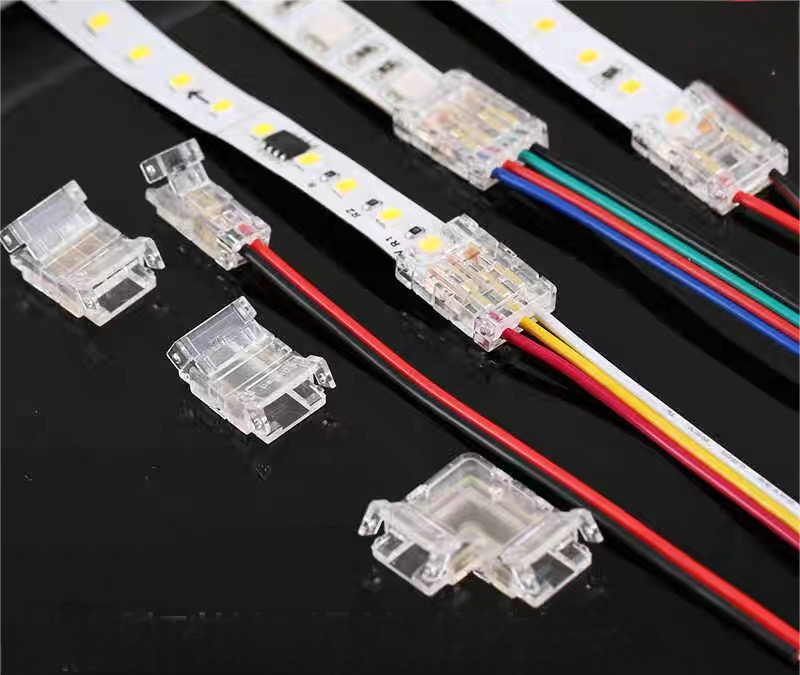
What is LED Strip Connector?
An LED Strip Connector is an electrical component designed to help users seamlessly connect LED strips after cutting, enhancing ease of use and flexibility in configuration. Primarily made of a PCB board and a plastic shell with PINs, the connector establishes a conductive circuit to ensure consistent power flow across LED strips. This design simplifies installation and boosts connection stability, allowing users to customize LED setups without needing soldering skills.
Main Types of LED Strip Connectors:
LEDWorker Lighting Co., Ltd., based in Shenzhen and established in 2012, specializes in a complete range of waterproof and non-waterproof LED connectors. They offer rapid delivery times (3-5 days) and serve clients in over 200 countries with versatile products adaptable for different industry needs.
- Solder-Free Connectors: Simplify installation by enabling users to connect strips without soldering.
- Waterproof Connectors: With IP20, IP65, and IP67 options, suitable for different environments.
- Transparent Connectors: These provide a more discreet look while maintaining connection functionality.
- Various Configurations: Available in shapes like straight, T-type, cross, and right-angle connectors, plus options for single-side, double-side, or board-to-board connections.
-
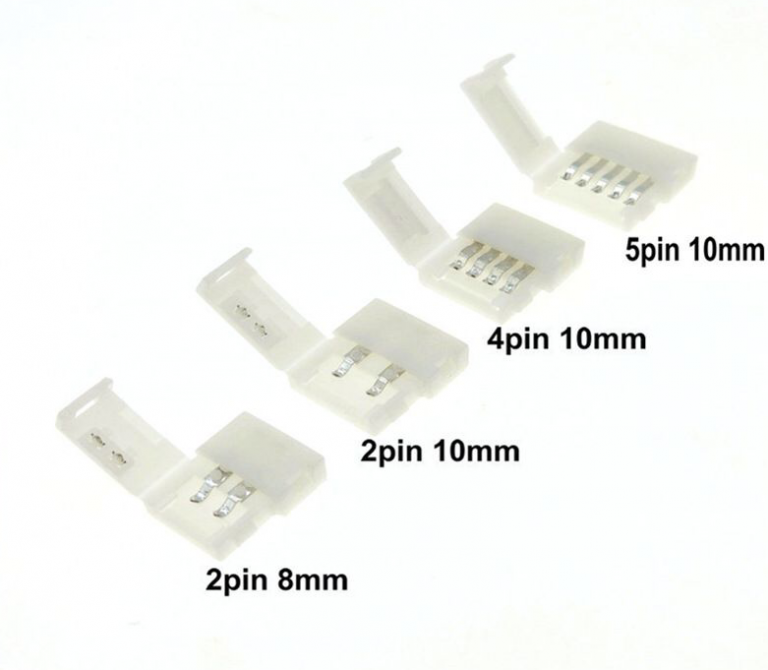
Solder Free Connectors
-
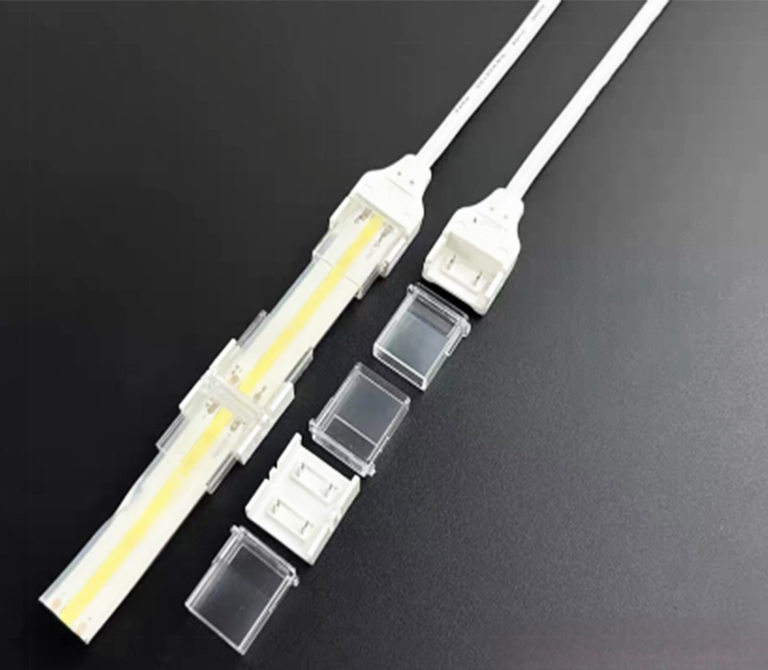
Waterproof Connectors
-
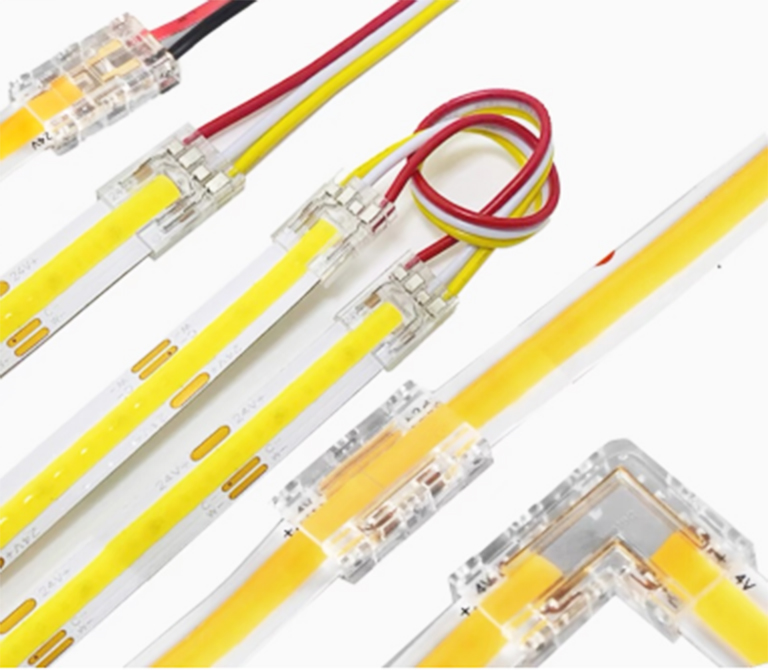
Transparent Connectors
-
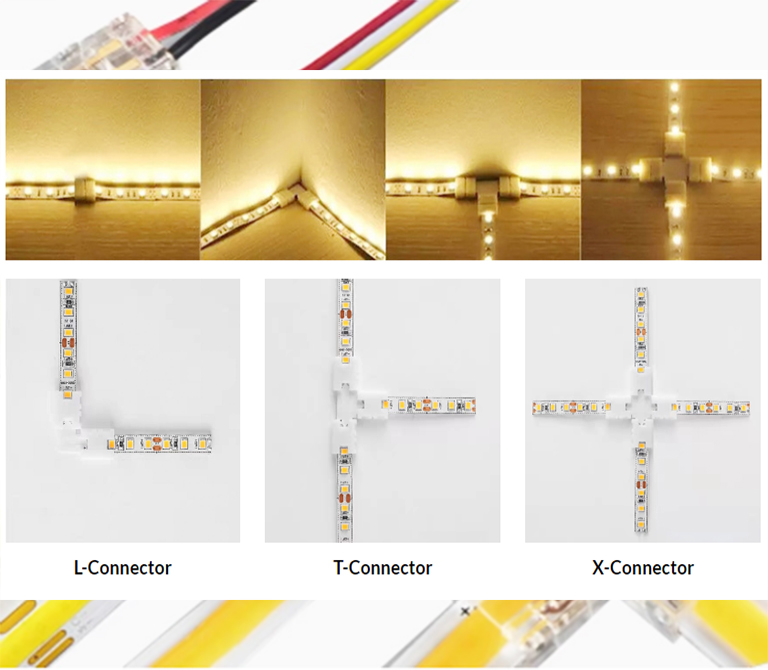
Various Configurations
Products Index
LED Strip Connectors Overview
1. Non-Waterproof Series
-
Solderless Connectors: A traditional connector with clips for each pin to hold LED strip pads securely. After cutting the LED strip, simply insert it into the connector to light up. Available in various configurations:
- Pin Configurations: 2-pin (single color), 3-pin (dual color), 4-pin (RGB), 5-pin (RGBW), and 6-pin (5-in-1).
- Shapes: Cross, L-shape, T-shape, single-ended, and double-ended.
- Styles: Non-Waterproof Middle Connector, Corner Connector, and Strip-to-Wire Connector.
Video Tutorial on Use
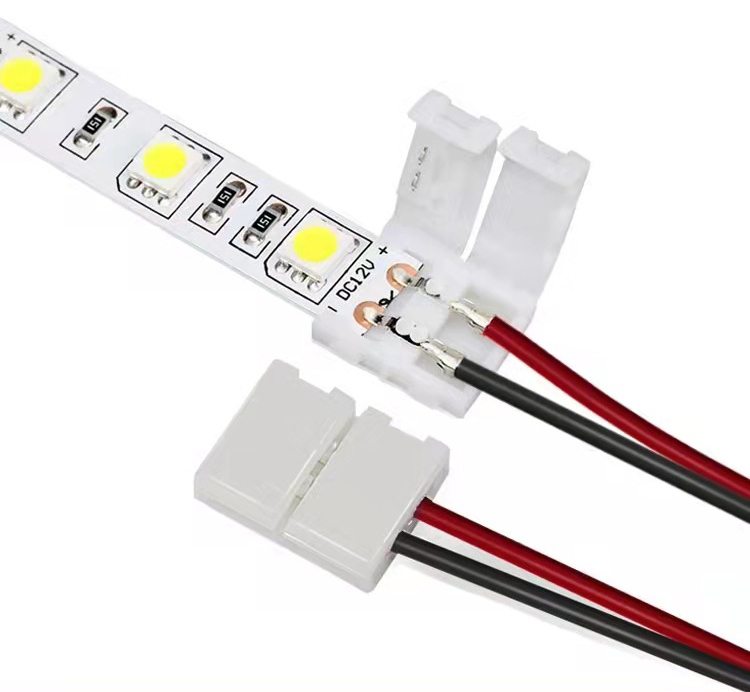

-
Transparent Connectors: Made of transparent plastic with pins, available in two main types:
- Type A (LED strip to wire) and Type B (LED strip to LED strip).
- Pin Options: 2 to 6 pins for various widths (6mm, 8mm, 10mm, 12mm).
- Styles: Non-Waterproof Middle Connector, Corner Connector, and Strip-to-Wire Connector.
Solderless vs. Transparent Connectors Comparison

-
Hippo Buckle Connectors: Popular for their range of compatibility, available in IP20 and IP65, with pins ranging from 2 to 6. Ideal for various strip widths and setups (strip-to-wire, strip-to-strip).
How to Use Hippo Buckle

-
Wire Connectors: Includes plug connectors and distribution boxes (1-to-2, 1-to-3, and 1-to-4). Designed for quick connections and efficient cable management.

2. Waterproof Series
Designed for waterproof LED strips, these connectors ensure stable operation in outdoor conditions:
- Pin Options: 2 to 6 pins for different strip configurations.
- Styles: Waterproof Middle Connector, Corner Connector, and Strip-to-Wire Connector, suitable for various widths (8mm, 10mm, 12mm).

Advantages and disadvantages of different connectors:
1. Solderless Connectors
- Advantages: Easy to use and available in a variety of styles, including different pin configurations (2-6 pins) and shapes (cross, L-shape, T-shape).
- Disadvantages:
- Only suitable for non-waterproof LED strips.
- Often covers one or two LEDs, which can create a small dark spot if used for under-cabinet lighting.
- Can become loose over time, especially if there’s external force or movement, due to the simple clip mechanism.
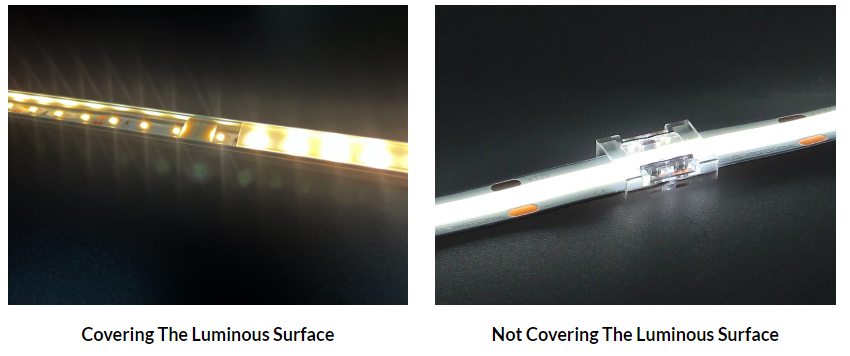
2. Transparent Connectors
- Advantages: Provides a firm connection by penetrating the PCB, which helps prevent disconnection. The transparent body allows light to pass through, creating a seamless effect without shadows or dark spots.
- Disadvantages: Primarily suited for indoor use unless specified otherwise for waterproofing.
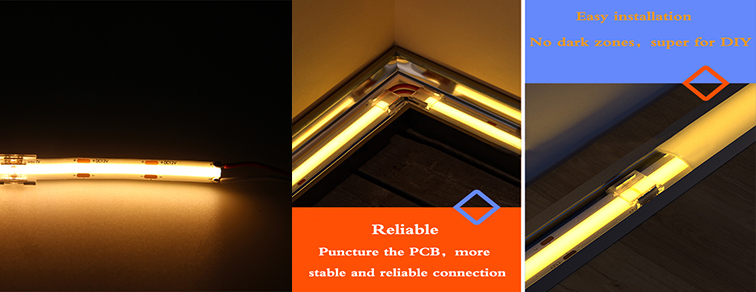
3. Hippo Buckle Connectors
- Advantages: Available in waterproof (IP65) and non-waterproof versions. Compatible with various PCB widths from 5mm to 12mm, making them versatile. Offers a robust hold, stronger than solderless connectors.
- Disadvantages: Bulkier than transparent connectors, making it challenging to fit into narrow spaces, such as aluminum channels. Light transmission isn’t as clear as with transparent connectors, but still better than many solderless options.
4. Waterproof Connectors
- Advantages: Designed with a sealed structure, providing protection against moisture and suitable for outdoor applications. They ensure reliable operation in wet or humid environments.
- Disadvantages: Larger size due to sealing components, which may limit compatibility with narrow installation channels.
Why Choose LED Connector?
Choosing an LED connector can make LED strip installation quicker, easier, and more flexible. Here’s why it’s a popular choice:
-
Ease of Installation
LED connectors simplify the process by eliminating the need for soldering. Users don’t need specialized tools or skills to install LED strips, as connectors can be attached by hand. This not only saves time but also avoids the complexity involved in soldered connections, which typically require more tools and expertise.
-
Versatile Options
LED connectors come in a range of styles to meet different needs. Options include waterproof and non-waterproof connectors, as well as multiple PIN configurations (e.g., 2-pin for single-color, 3-pin for RGB, etc.) and widths to match different LED strip specifications. This makes them suitable for various LED lighting applications, from indoor decor to outdoor installations.
-
High Quality and Durability
Made from high-quality, corrosion-resistant, and heat-resistant materials, LED connectors are built for long-term use. They provide stable connections and can withstand different environmental conditions, enhancing the reliability and lifespan of the LED installation.
-
Easy Maintenance
LED connectors offer simple maintenance. If a section of the LED strip fails, it’s easy to cut and replace only the affected part without disrupting the entire setup. Many connectors are designed for easy disconnection and reconnection, allowing for quick repairs and adjustments with minimal effort and cost.
To select a suitable LED strip connector, consider the following steps:
-
LED Strip Type:
- Identify the LED strip’s type based on the number of PINs required. Typically:
- Single-color strips need a 2-pin connector.
- Tunable white or dynamic color LED strips (such as RGB or RGBW) require 3-pin, 4-pin, or 5-pin connectors respectively.
- 5-in-1 LED strips use 6-pin connectors.
- Also, match the width of the connector to the width of your LED strip (usually 6mm, 8mm, 10mm, or 12mm).
- Identify the LED strip’s type based on the number of PINs required. Typically:
-
Usage Environment:
- For outdoor or humid conditions, choose waterproof options like hippo snap or waterproof connectors. If transparency is important (to avoid shading light), select clear waterproof connectors to maintain brightness.
-
Connector Type:
- Select a connection method suitable for your installation, including middle connectors, T, L, or X shapes, and options with single or double-sided cable connections to connect strips flexibly.
-
Confirm Requirements:
- If your LED setup has custom needs, consulting with a professional or a supplier can help. They can suggest the most compatible connectors and options.
Installation Guide:
- Solder-Free Connector: Cut the led strip to the appropriate position—> Peel off the tape of 3M adhesive about 1/4 inch—> Insert the two ends of the LED strip into the middle top position and snap it together—> Cover the cover—> Power on .

- Transparent Connector: The third one is the latest connector, this one is suitable for 2PIN regular led strip, cut the led strip to the proper position—> peel off the 3M adhesive tape about 1/4 inch—> two The end light strip is inserted into the middle top position—>Put the pin down, the led strip PCB board is penetrated—>Power on

1. Cut the COB on the cut mark. 2. Take the 3M tape out. 3.Put the strip with the connector and connect it together. 4.The installation is complete
- Hippo Snap Connector: The connection method of led strip and hippo buckle:Cut the led strip to the proper position—>Open strip end cover —> Place strip light on PIN —> Clamp cover slowly —> make sure all points are locked well

The connection method of led strip with cable:
Separate flat wire —> Place wire into groove —> clamp cover slowly —> make sure all points are locked well.

For visual guidance, watch this instructional video on connector installation: Watch Video.
Application
LED connectors are essential accessories for LED strip lights, known for their convenience, reliability, and flexibility. They play a crucial role in connecting LED strips in various lighting applications, from interior to exterior and decorative lighting, providing robust support for modern lighting solutions.
-
Indoor Lighting
LED connectors are widely used in homes, retail spaces, and offices to connect LED strips, ensuring stable and even lighting. Their quick installation and removal make maintenance and replacement more efficient, enhancing user experience.
-
Outdoor Lighting
In outdoor environments like parks, plazas, and building facades, waterproof connectors are indispensable. They protect against moisture and harsh weather conditions, ensuring safe, stable operation of LED strips in landscape and urban lighting projects.
-
Decorative Lighting
LED connectors facilitate easy connection and disconnection for decorative applications, such as holiday decorations and signage. This flexibility simplifies the setup and removal of lighting decorations, meeting both short-term and long-term needs.
Why Choose LEDWorker?
Choosing to wholesale LED strips from LedDesignsPro comes with numerous benefits designed to meet the needs of your business:
-
Quality and Safety
At LedDesignsPro, we prioritize quality and safety. All of our LED strips are manufactured using the finest materials and undergo rigorous testing to ensure they meet the highest standards. Every product is certified with CE and RoHS certifications, guaranteeing that our LED strips are both safe and reliable for a variety of applications.
-
Competitive Pricing
By producing our own LED chips and controlling every step of the manufacturing process, we are able to offer our products at highly competitive prices. This allows you to maximize your profit margins without compromising on quality.
-
Customizable Solutions
We understand that different projects have unique requirements. That’s why we offer comprehensive customization options, including LED density, PCB width, waterproofing levels, and color temperature. Whatever your project demands, we can deliver LED strips tailored to your exact specifications.
-
Production Capabilities
With our advanced manufacturing facilities and high production capacity, LedDesignsPro is equipped to handle bulk orders with ease. Whether you need thousands of meters for a large commercial project or a specific design for a niche market, we have the capacity to meet your demands efficiently and on time.
-
Fully Support
Our commitment to excellent customer service doesn’t end with the sale. We offer 24/7 support to ensure that your wholesale experience is seamless from start to finish. Our team is always ready to assist you with any inquiries, provide technical support, or help with logistics to ensure timely delivery.
-
Proven Track Record
We have built long-term relationships with clients worldwide, including well-known brands and large-scale distributors. Our consistent product quality, reliable service, and flexible solutions have earned us a reputation as a trusted supplier in the LED lighting industry.
FAQs
Here are top asked questions, feel free to contact us for more details.
-
Are LED strip light connectors universal?
No. different led strip need different connectors.
-
Can you fix broken LED Strip Lights?
Yes, can be. Just cut the broken LED. And use connect to make it together again.
-
what types of led strips can be connected to the connector?
Normally not more than 3 meters.
-
what types of led strips can be connected to the connector?
Single color led strip, RGB led strip, 4IN1 led strip, 5IN1 led strip, Addressable led strips.
-
Can the connector be placed in the aluminum slot?
Yes, it can be. Just make sure the aluminum profile is big enough for the connector.
We are here for all your business needs and questions.
